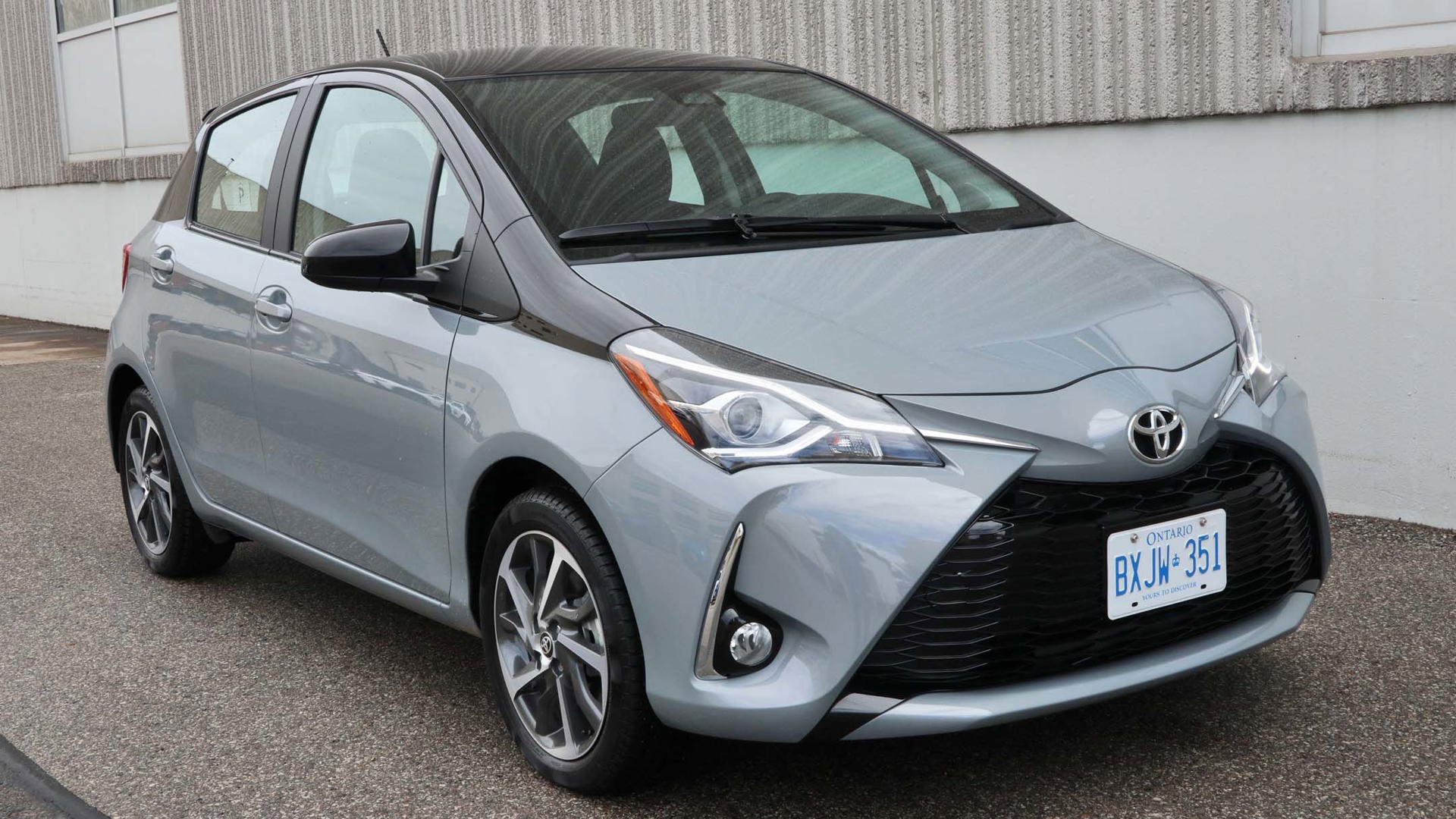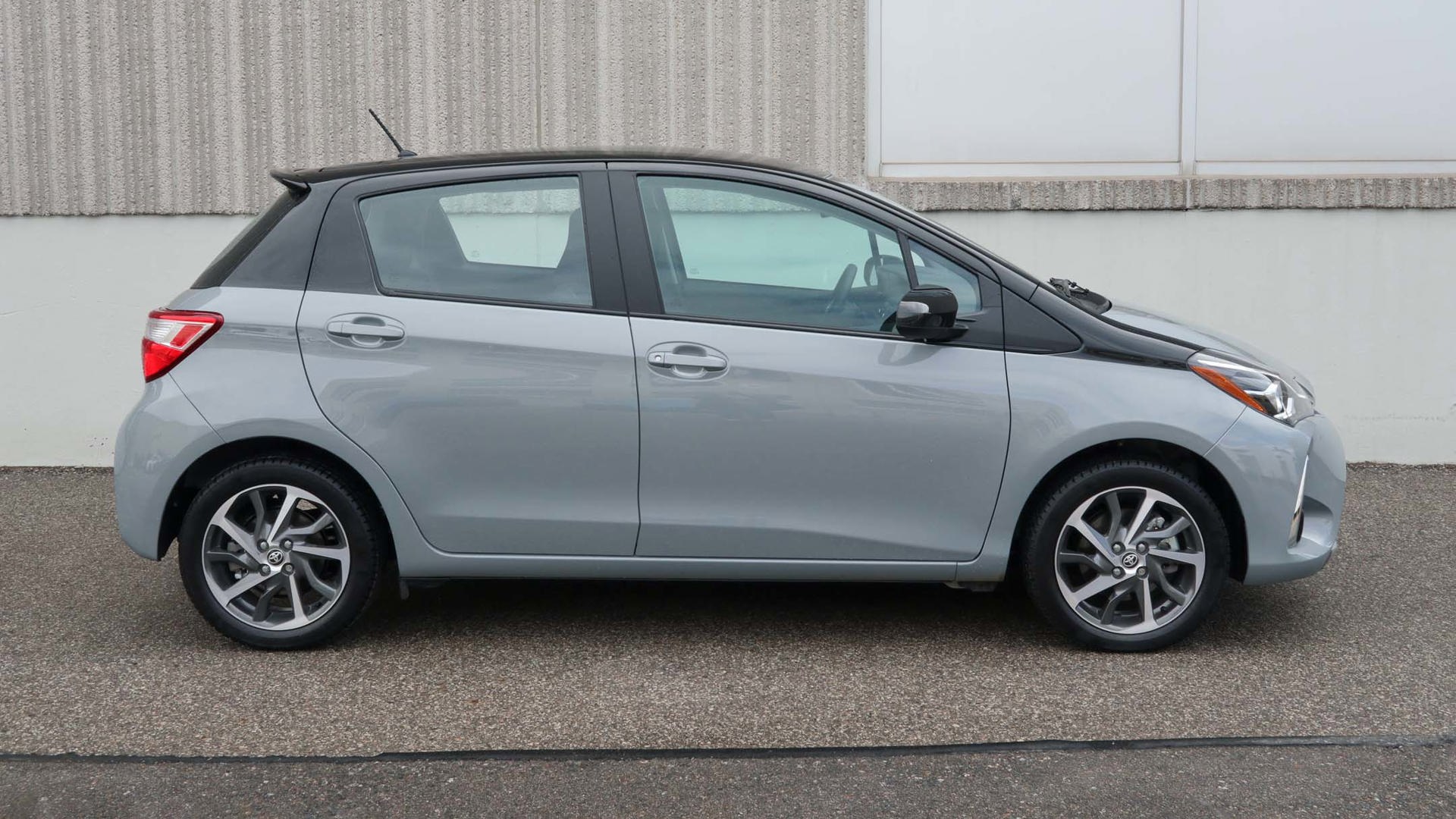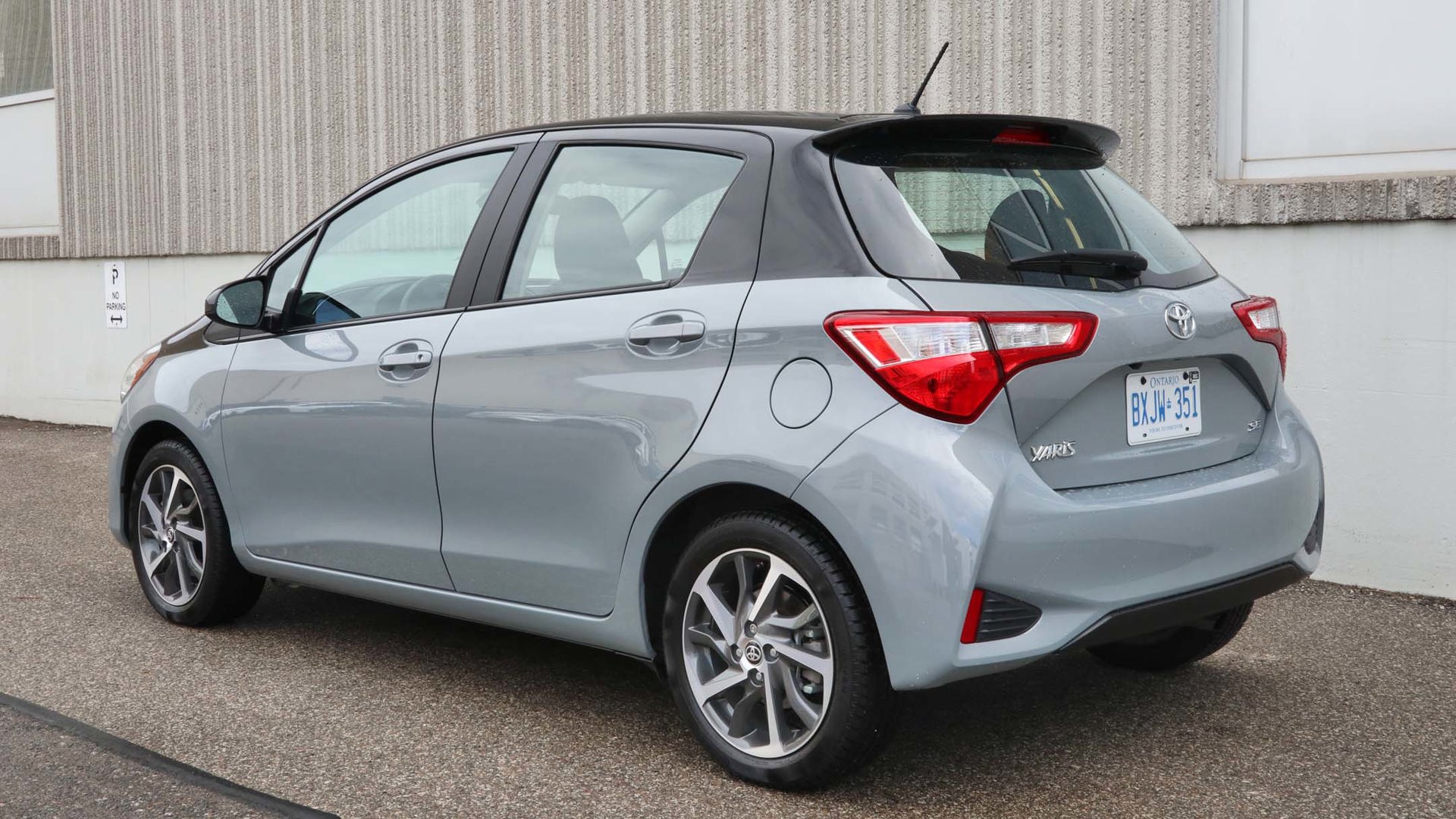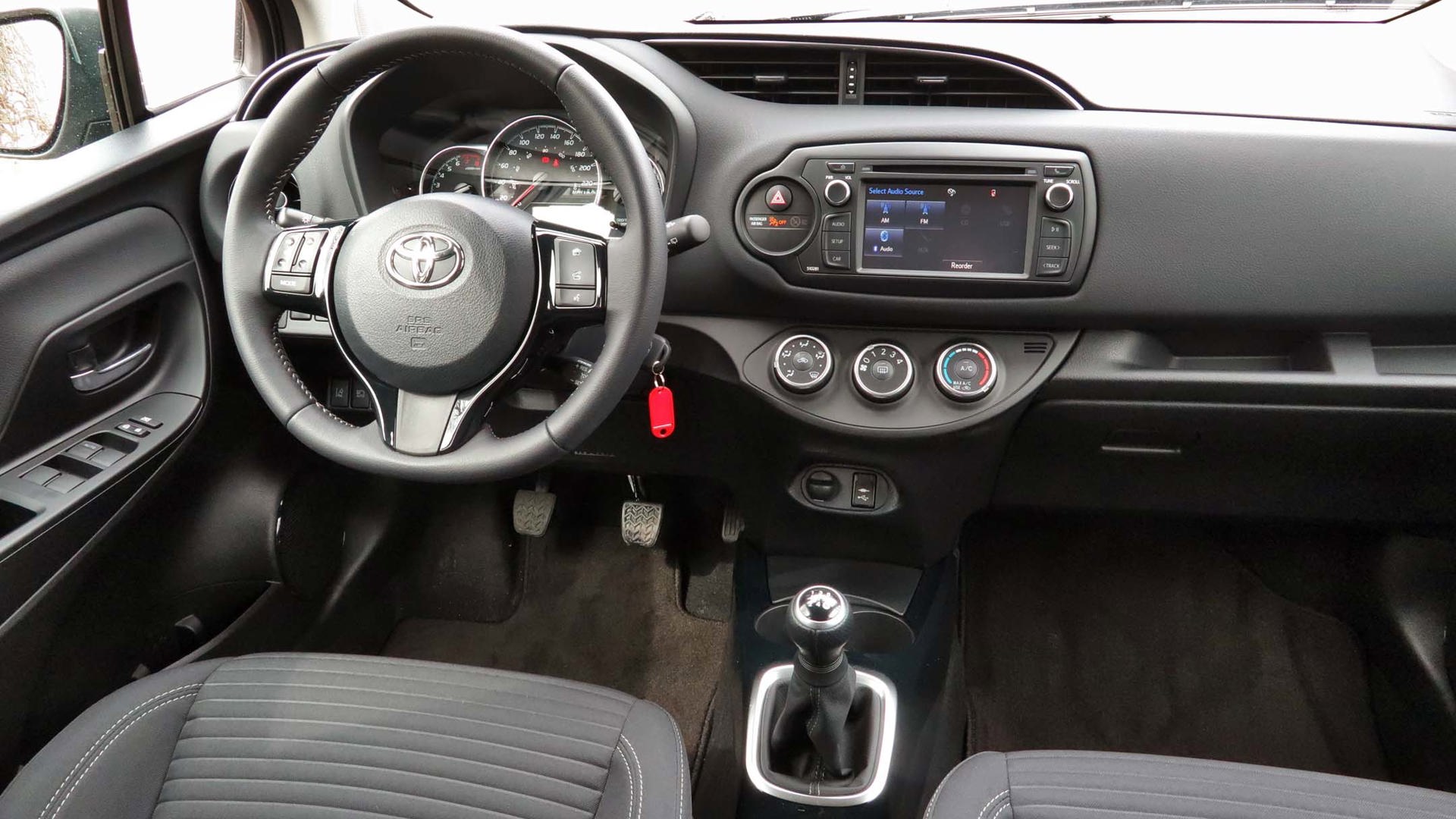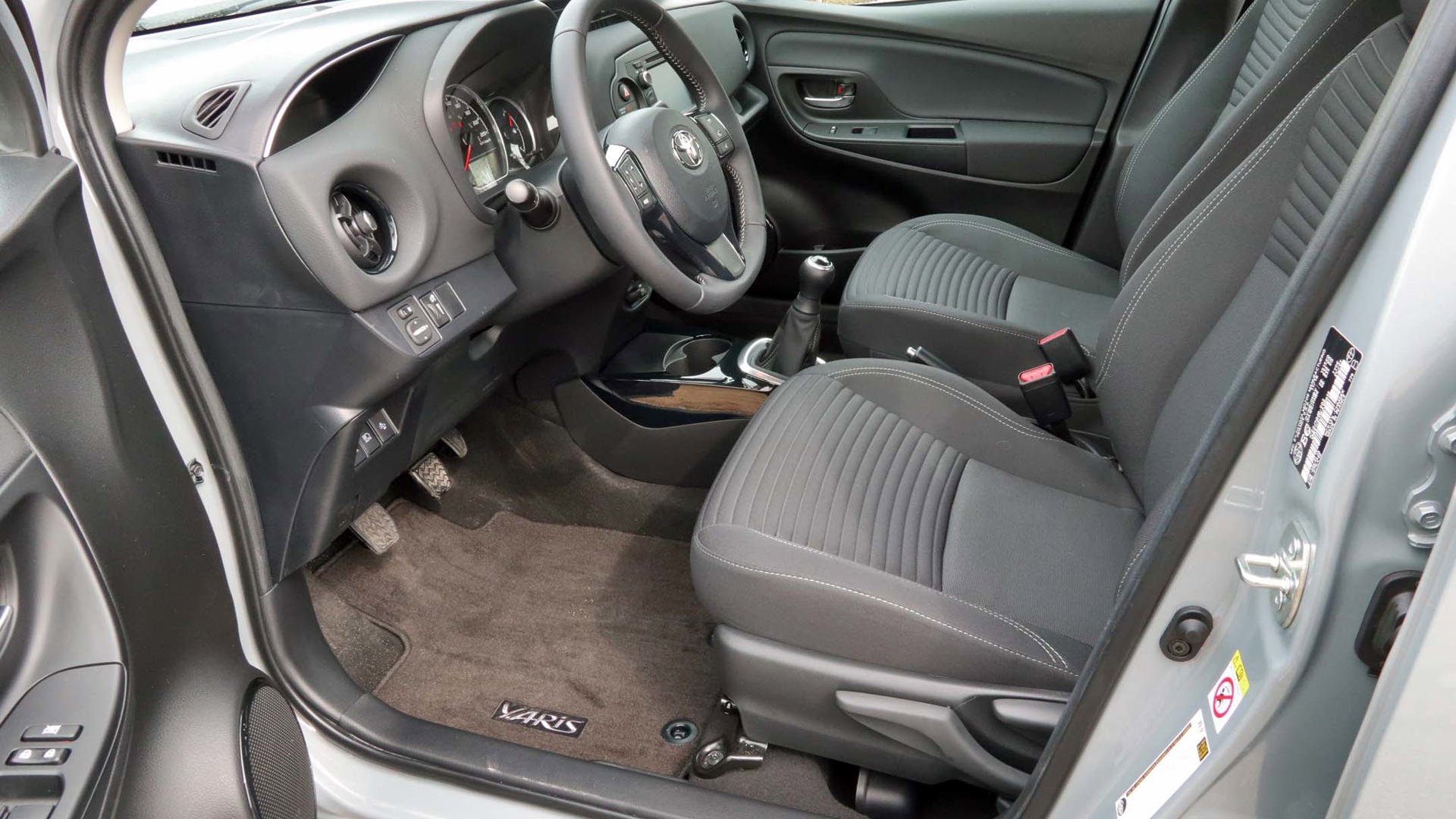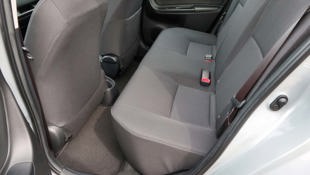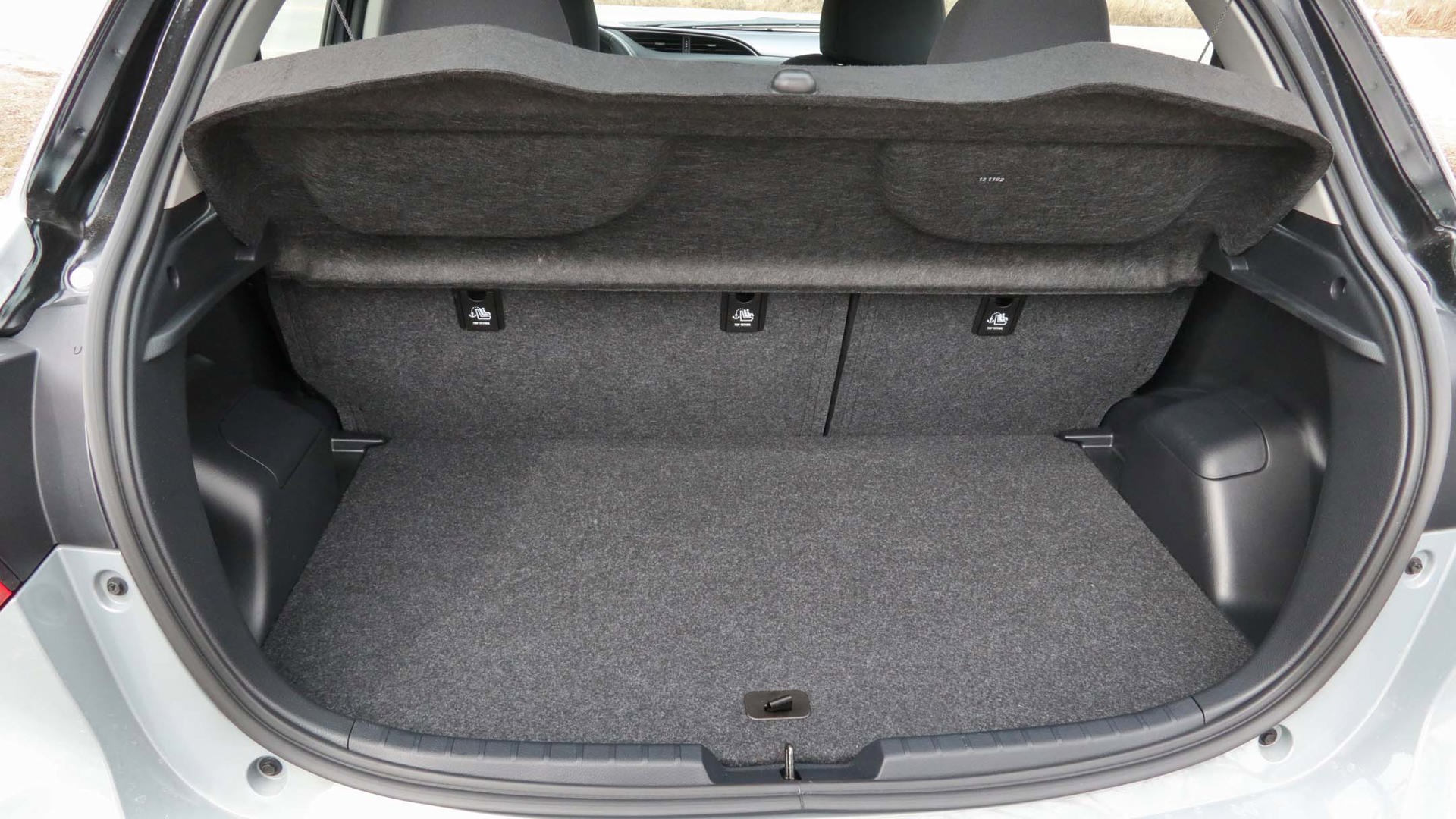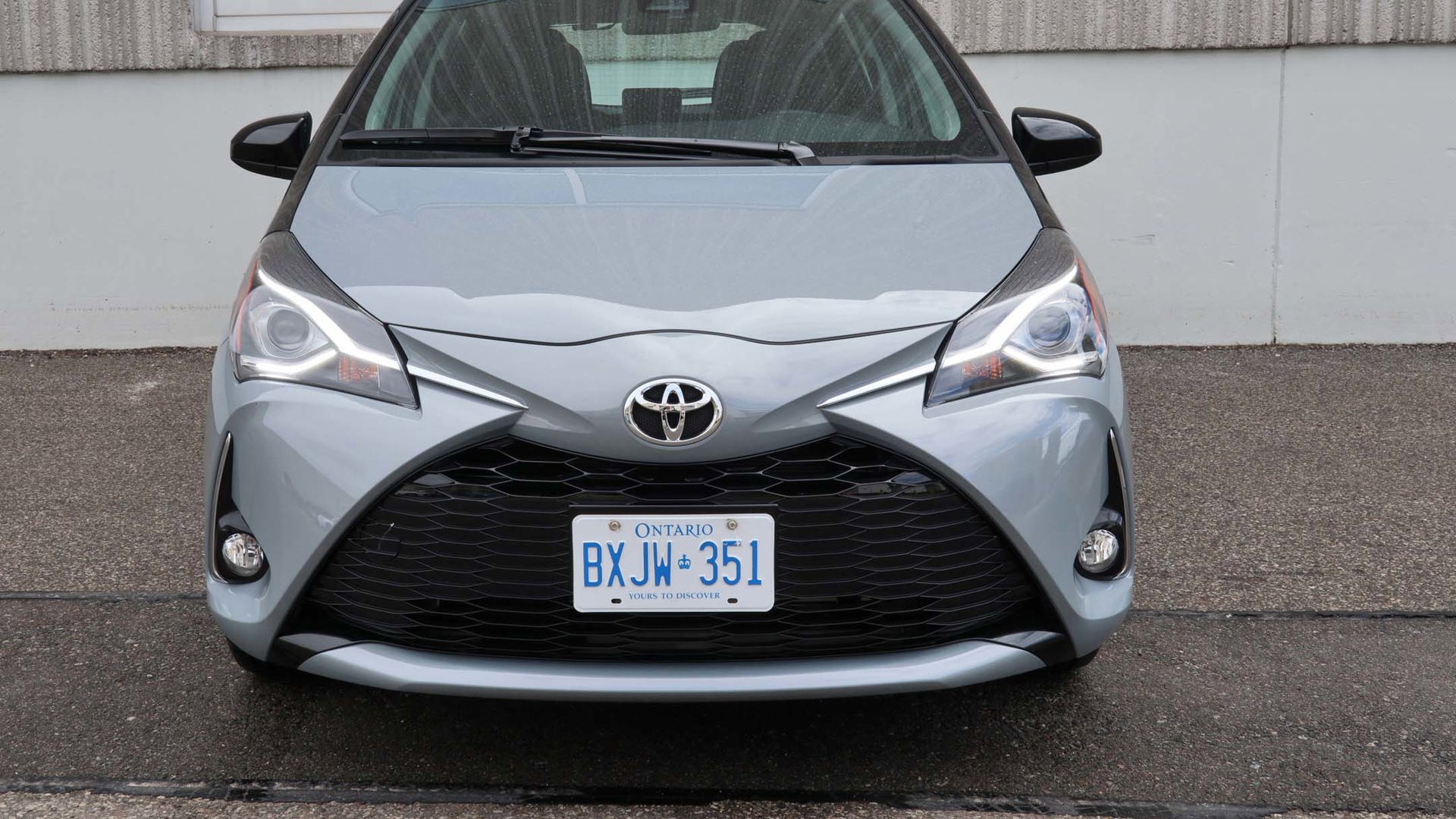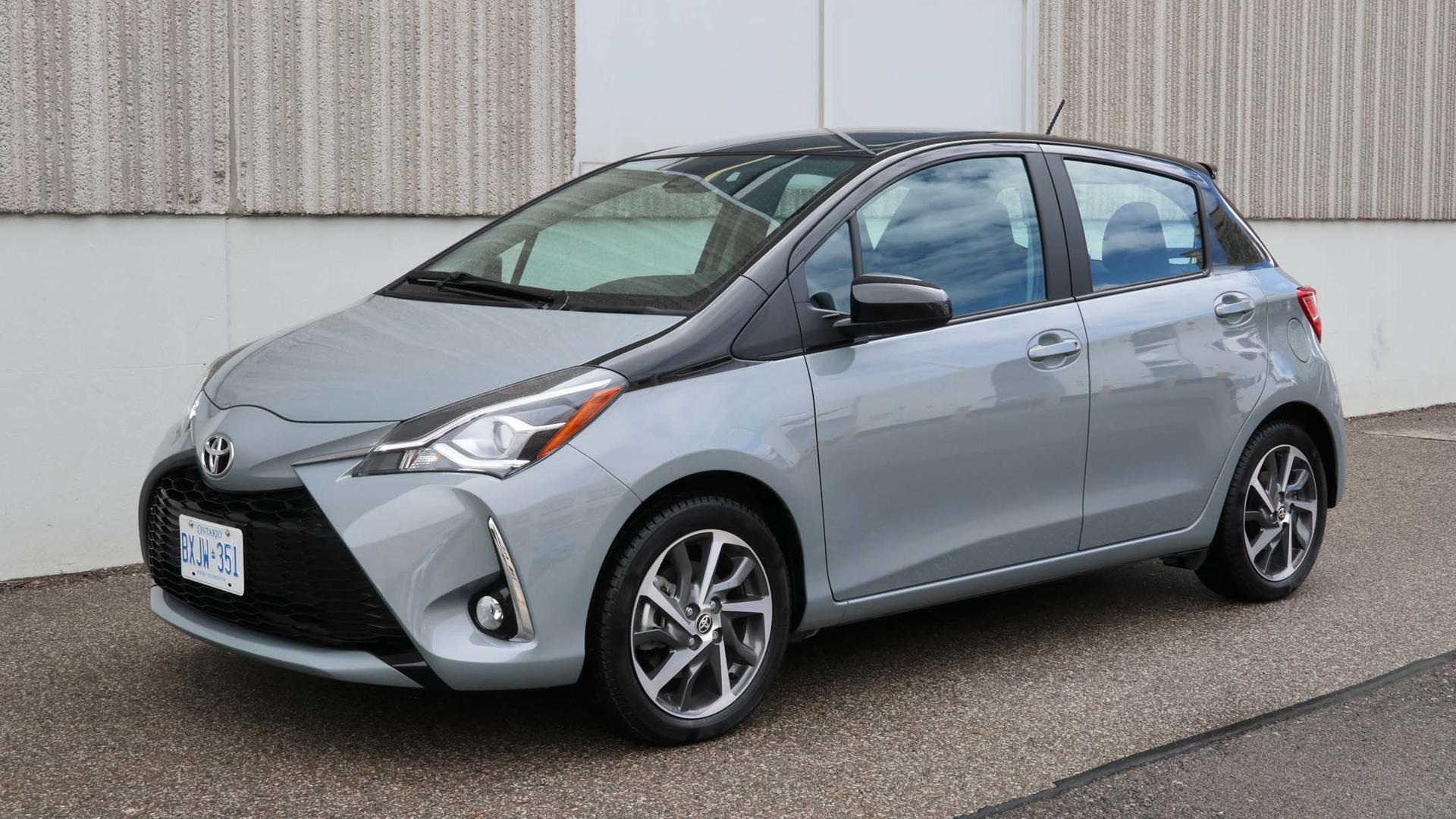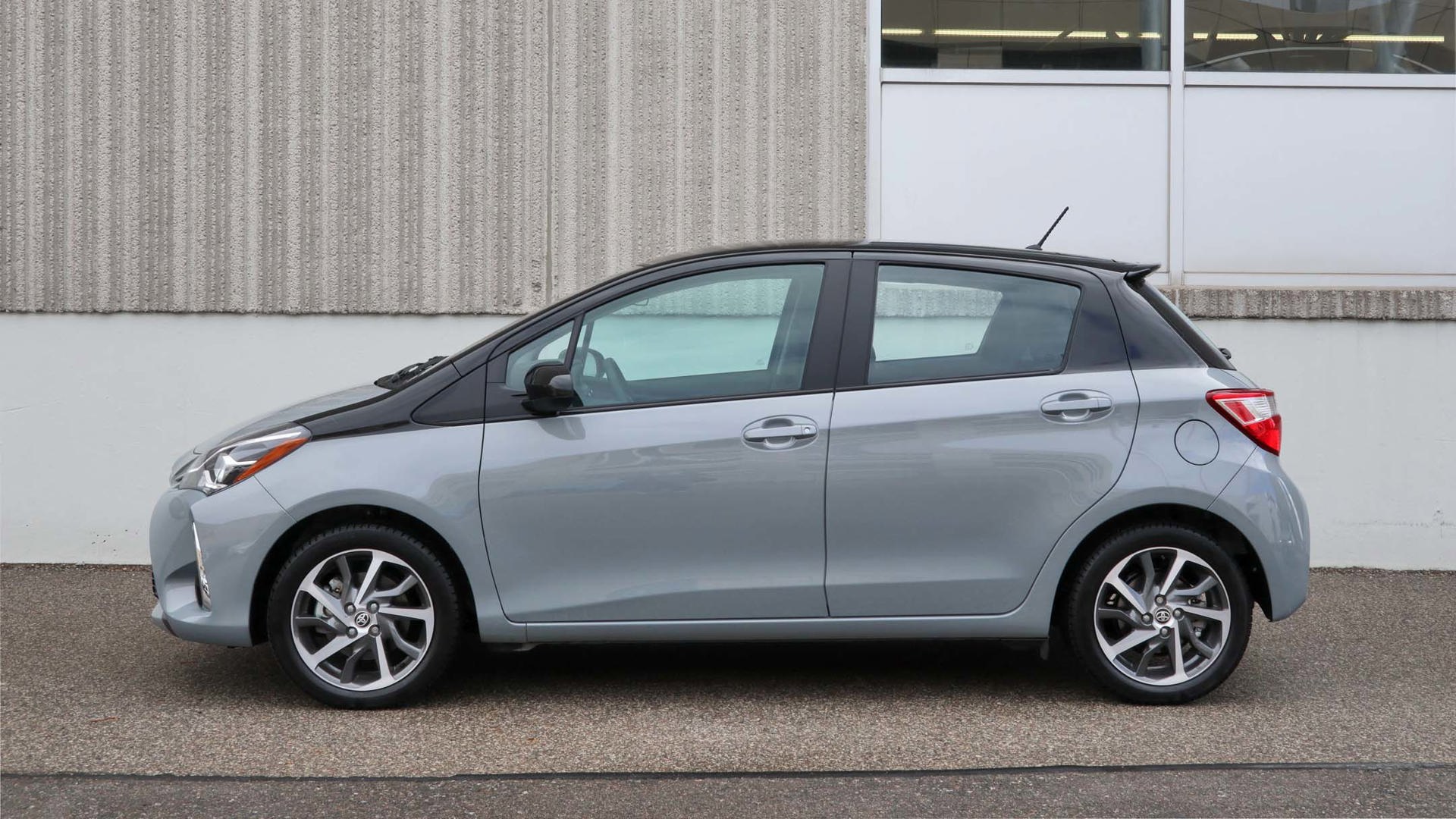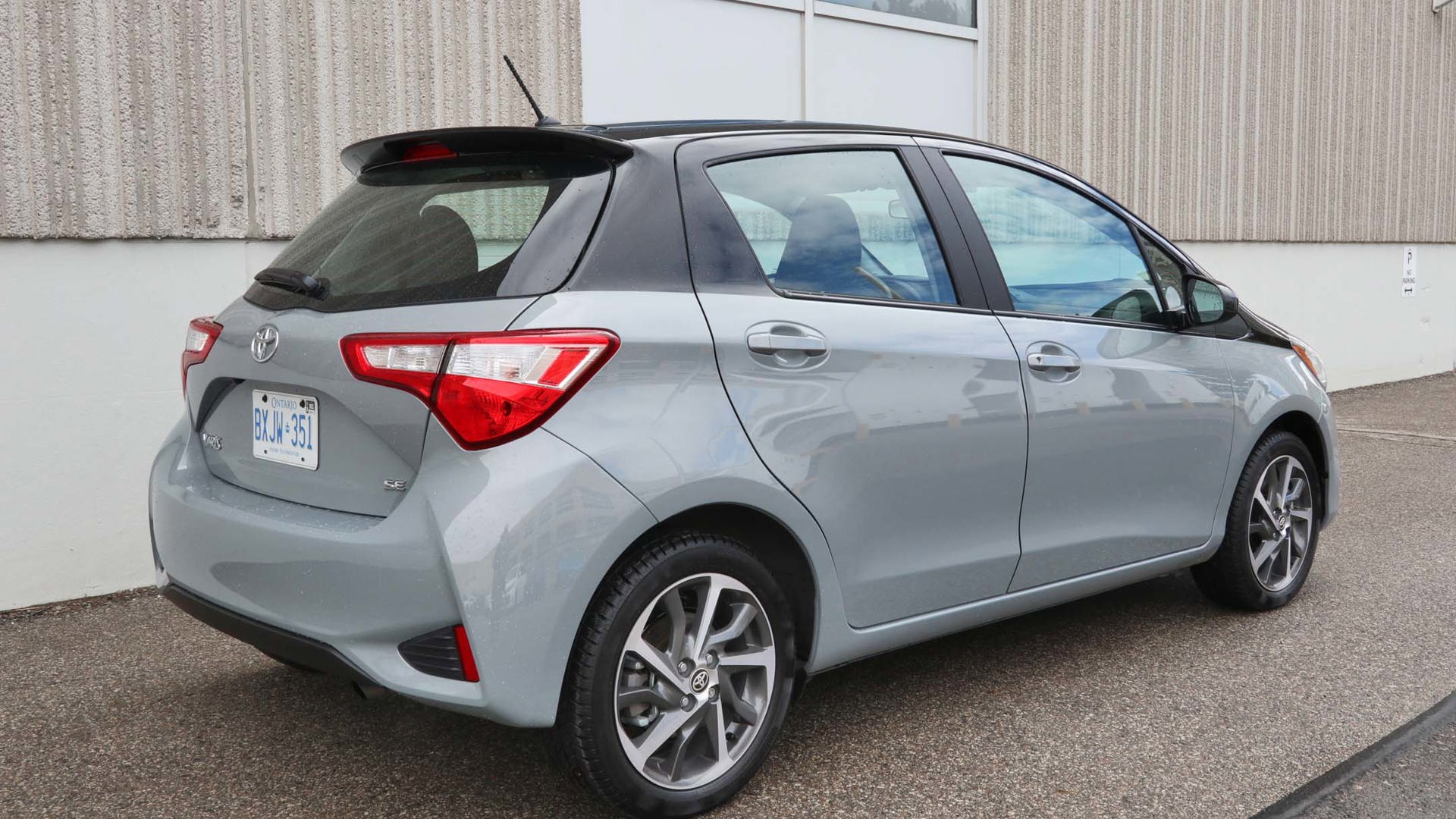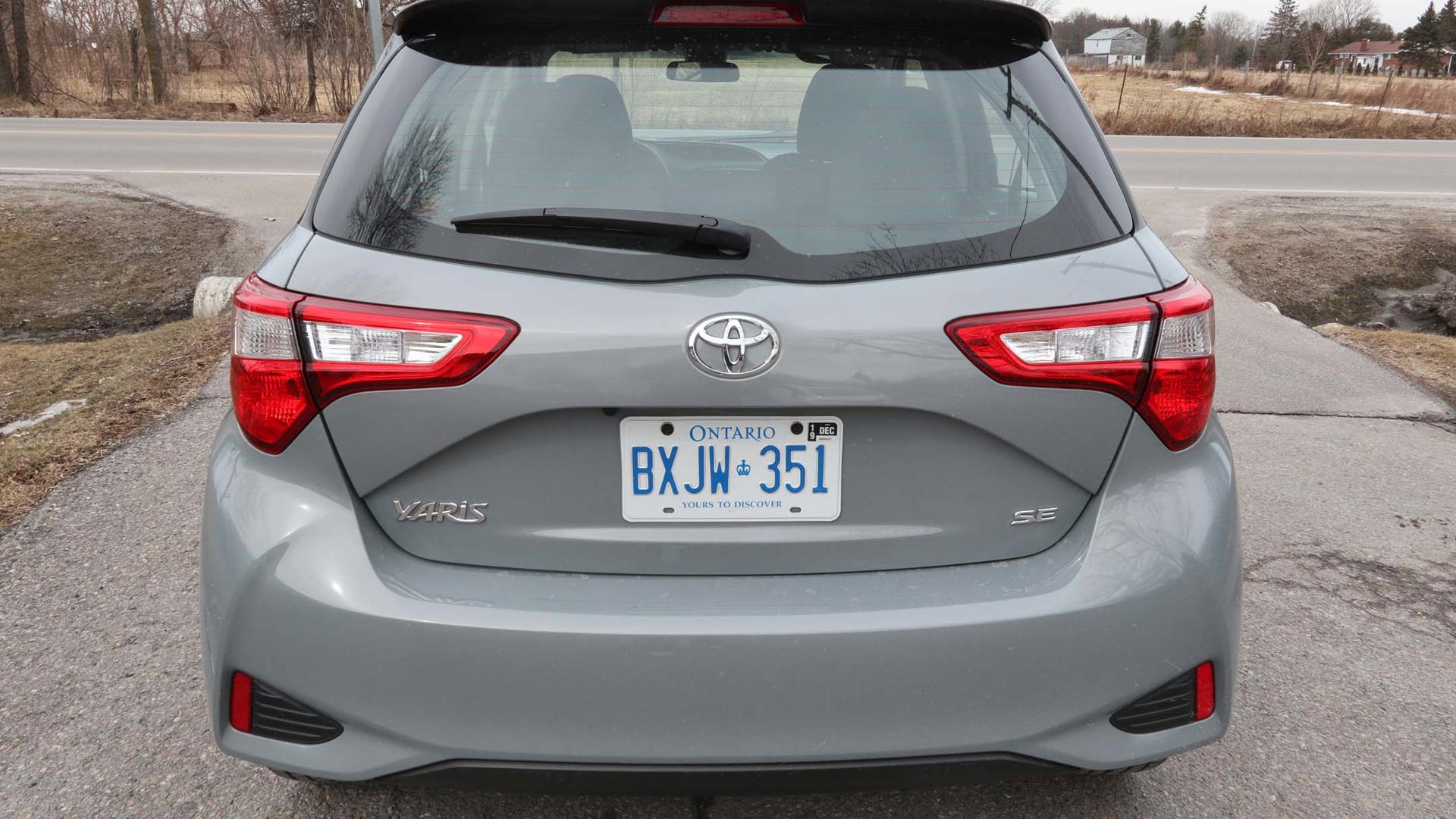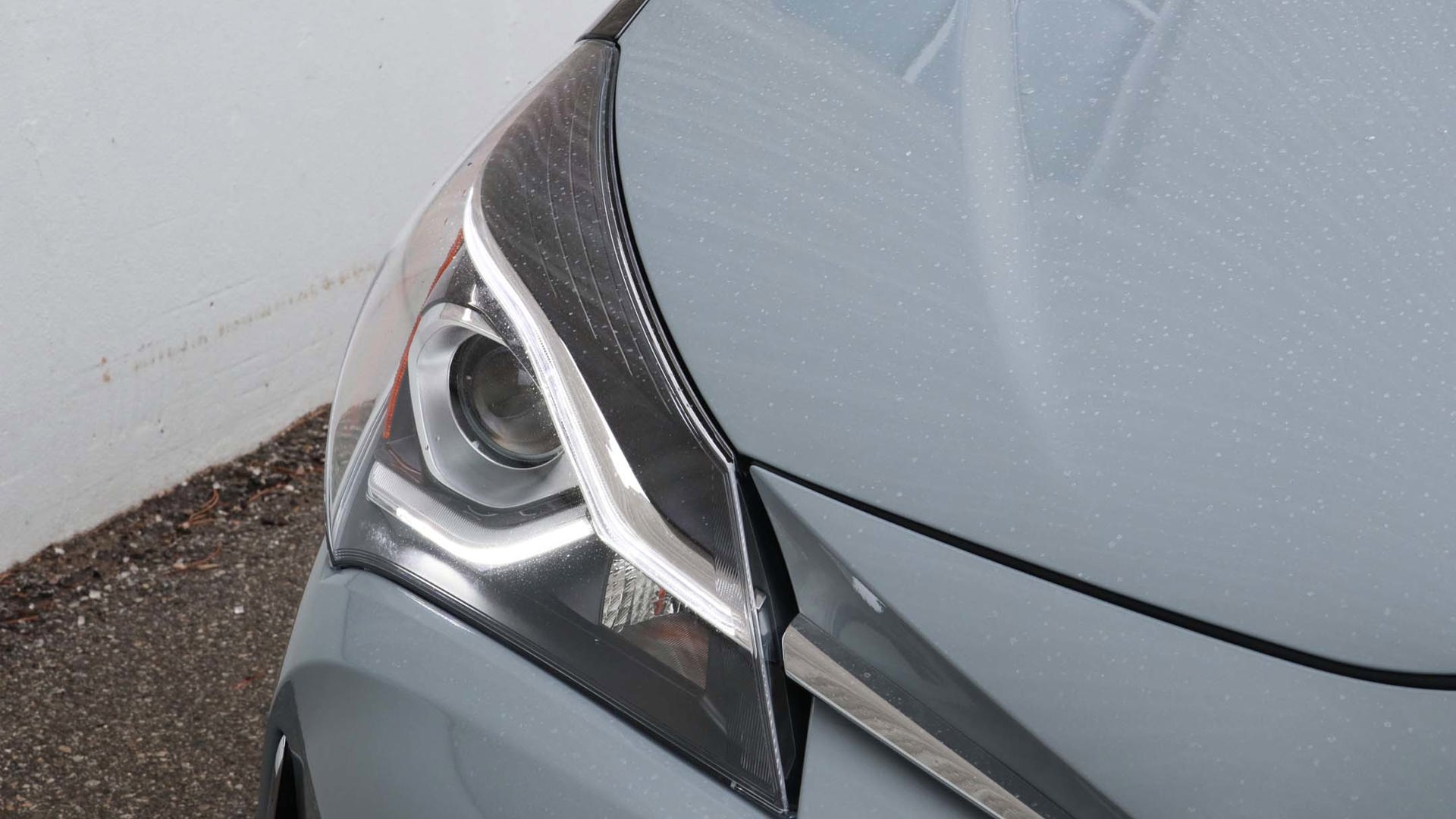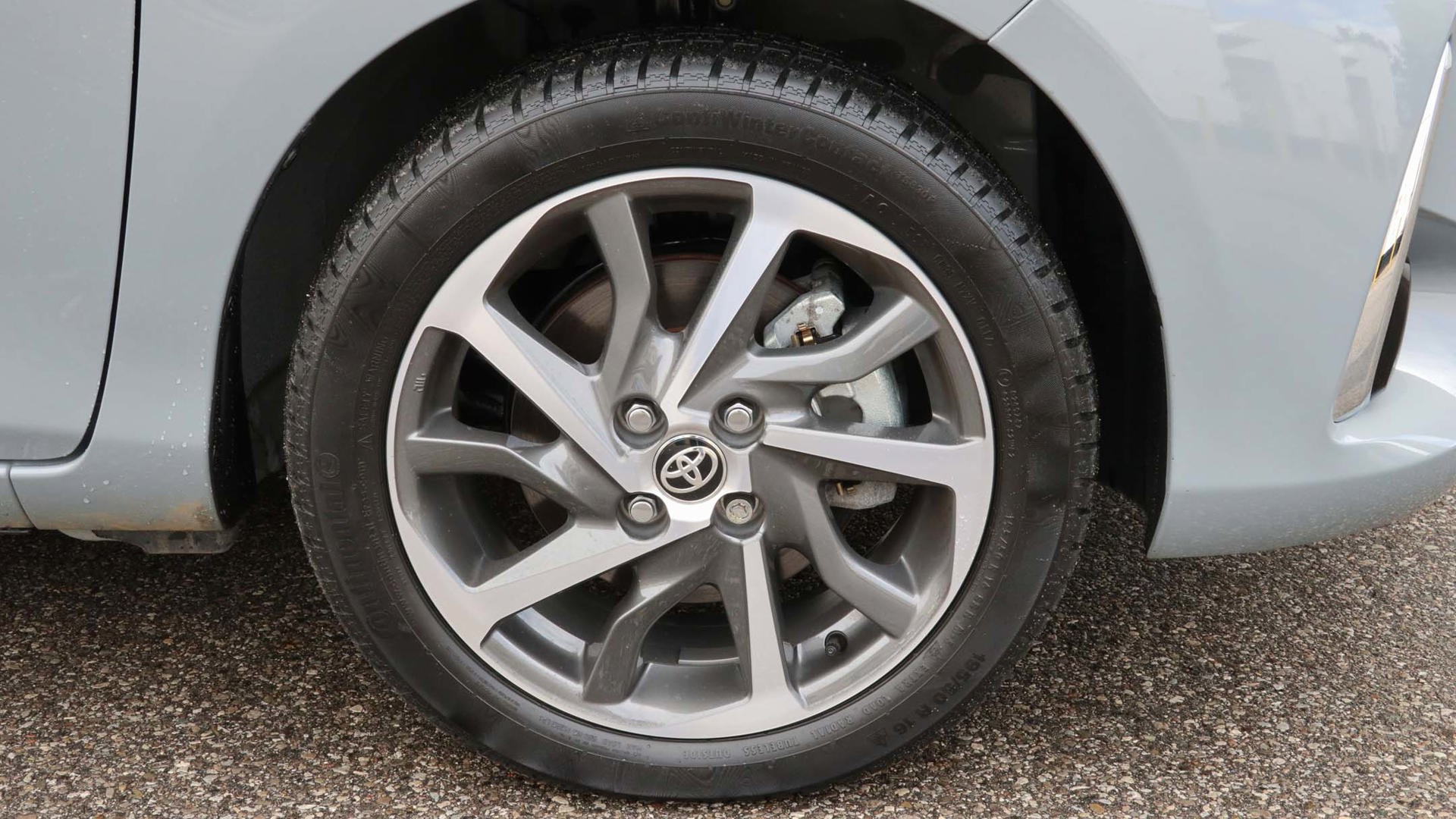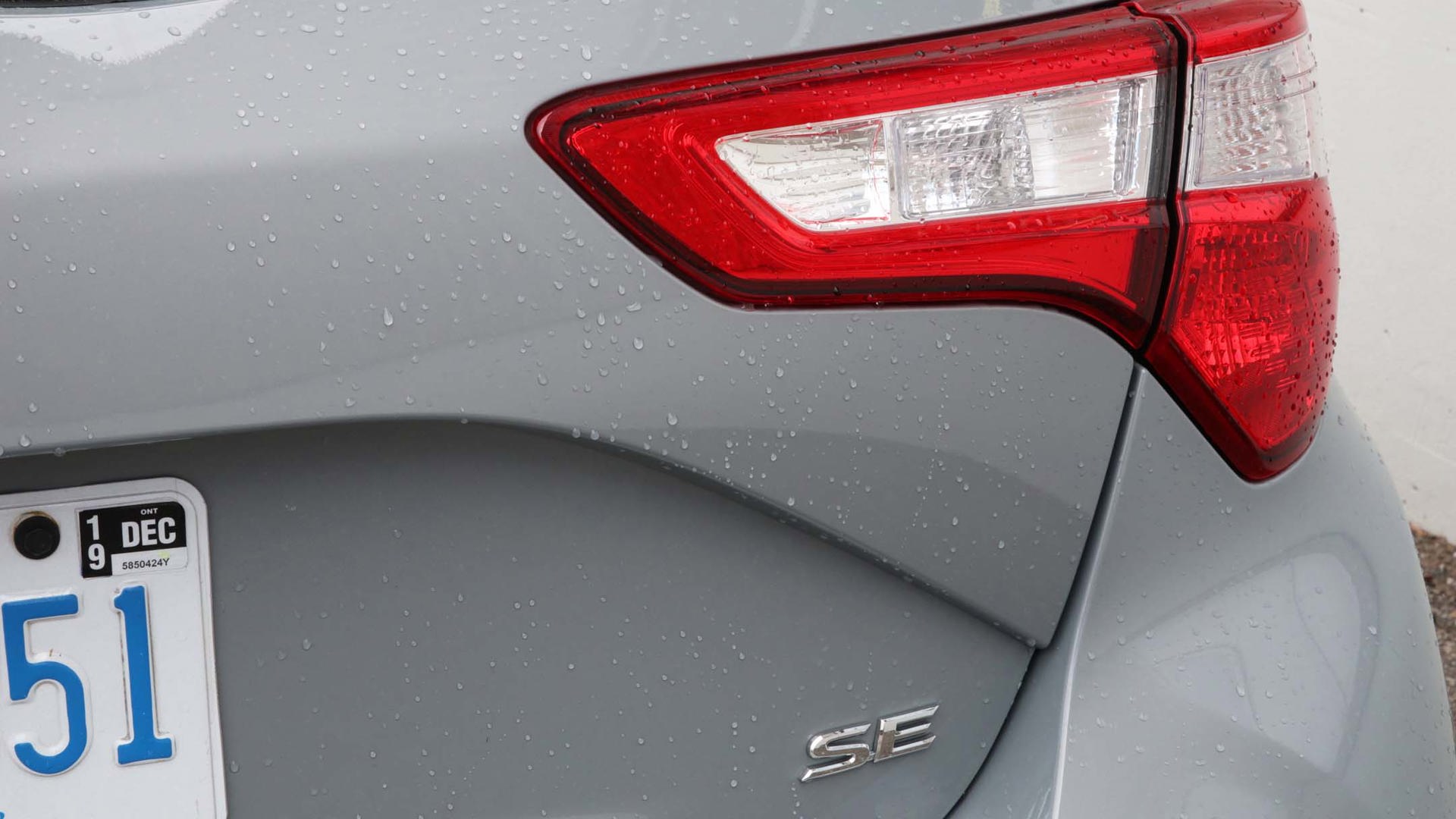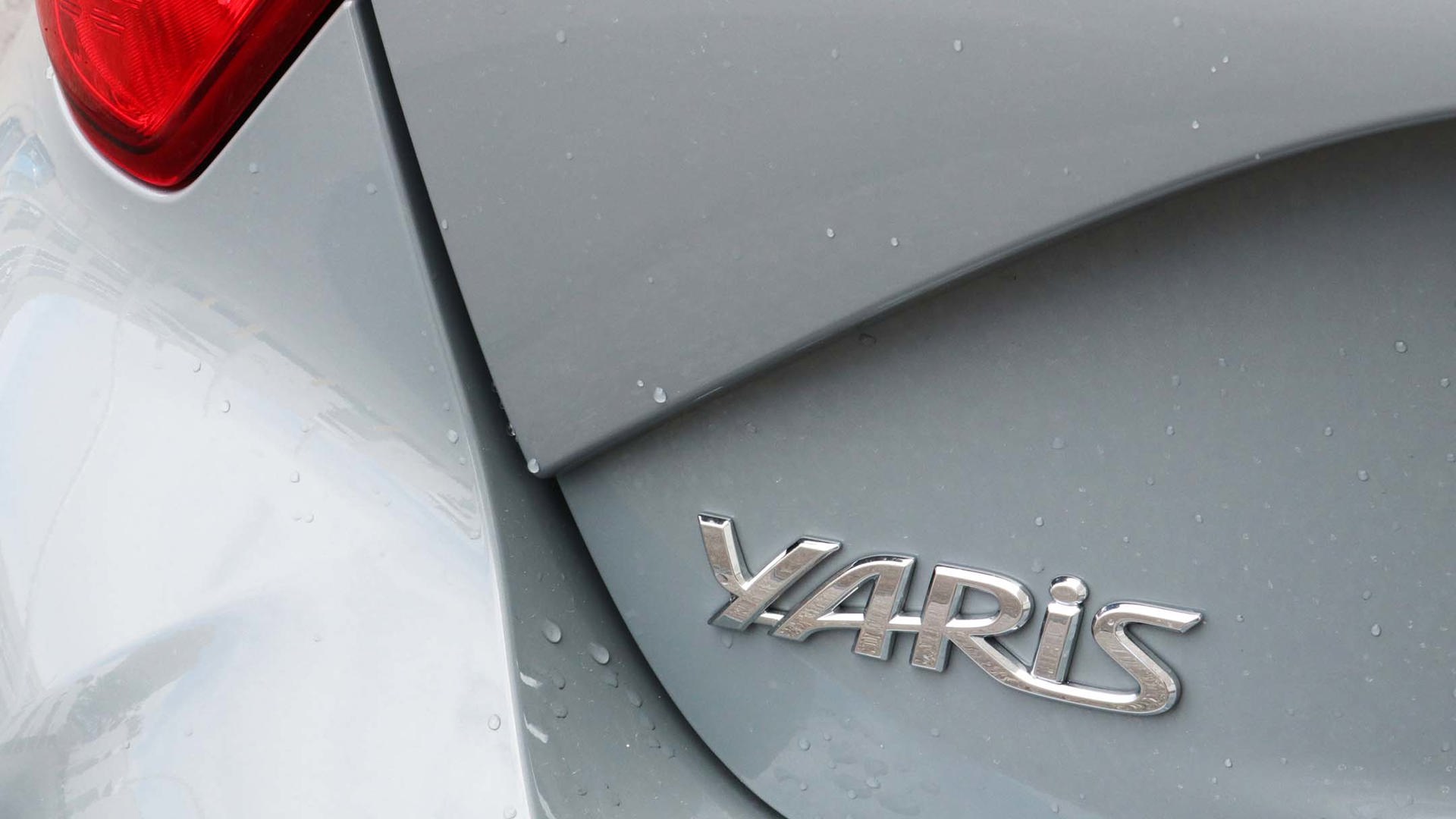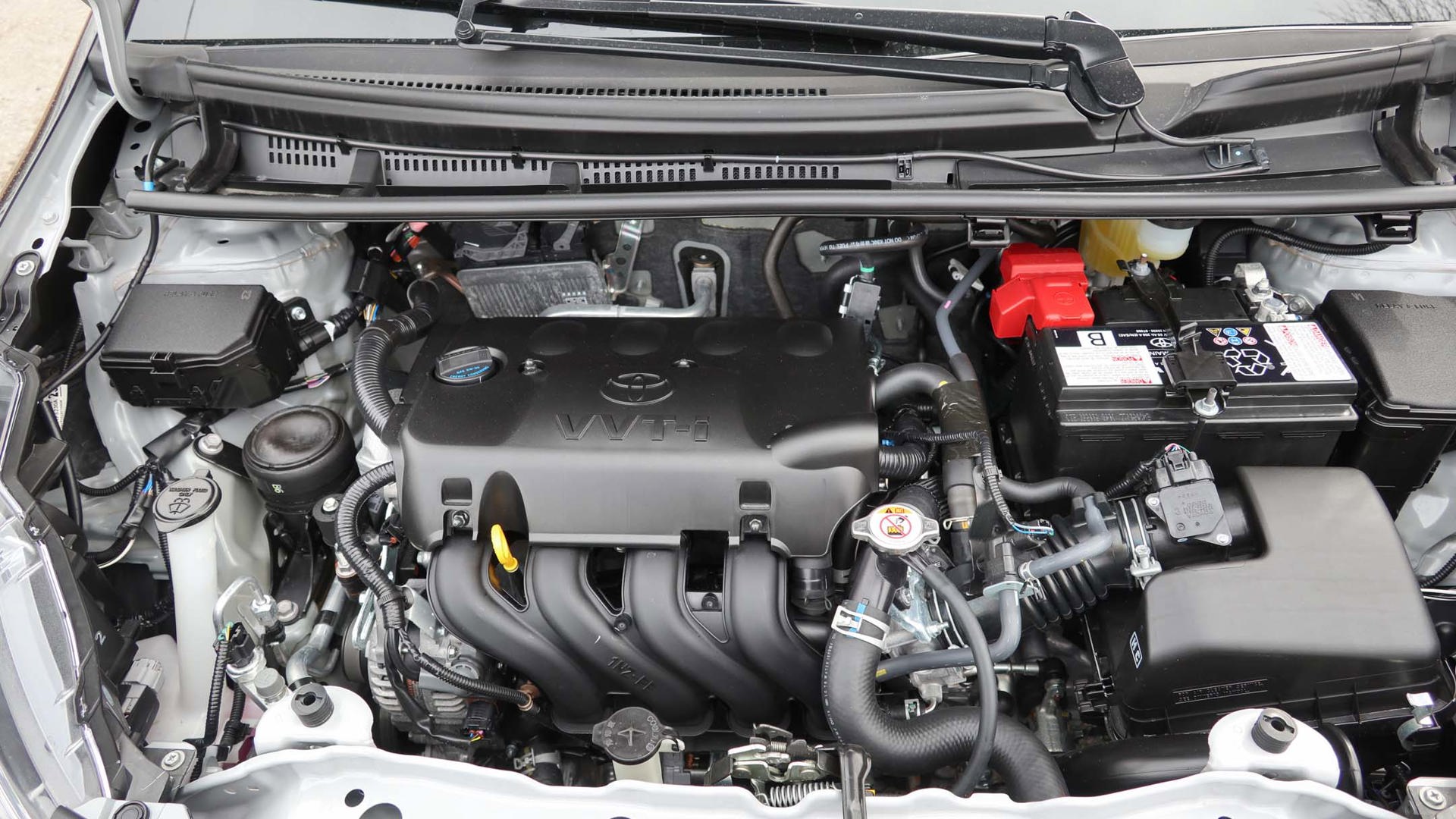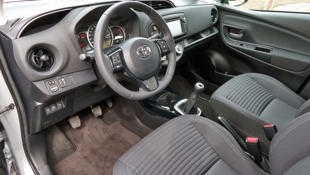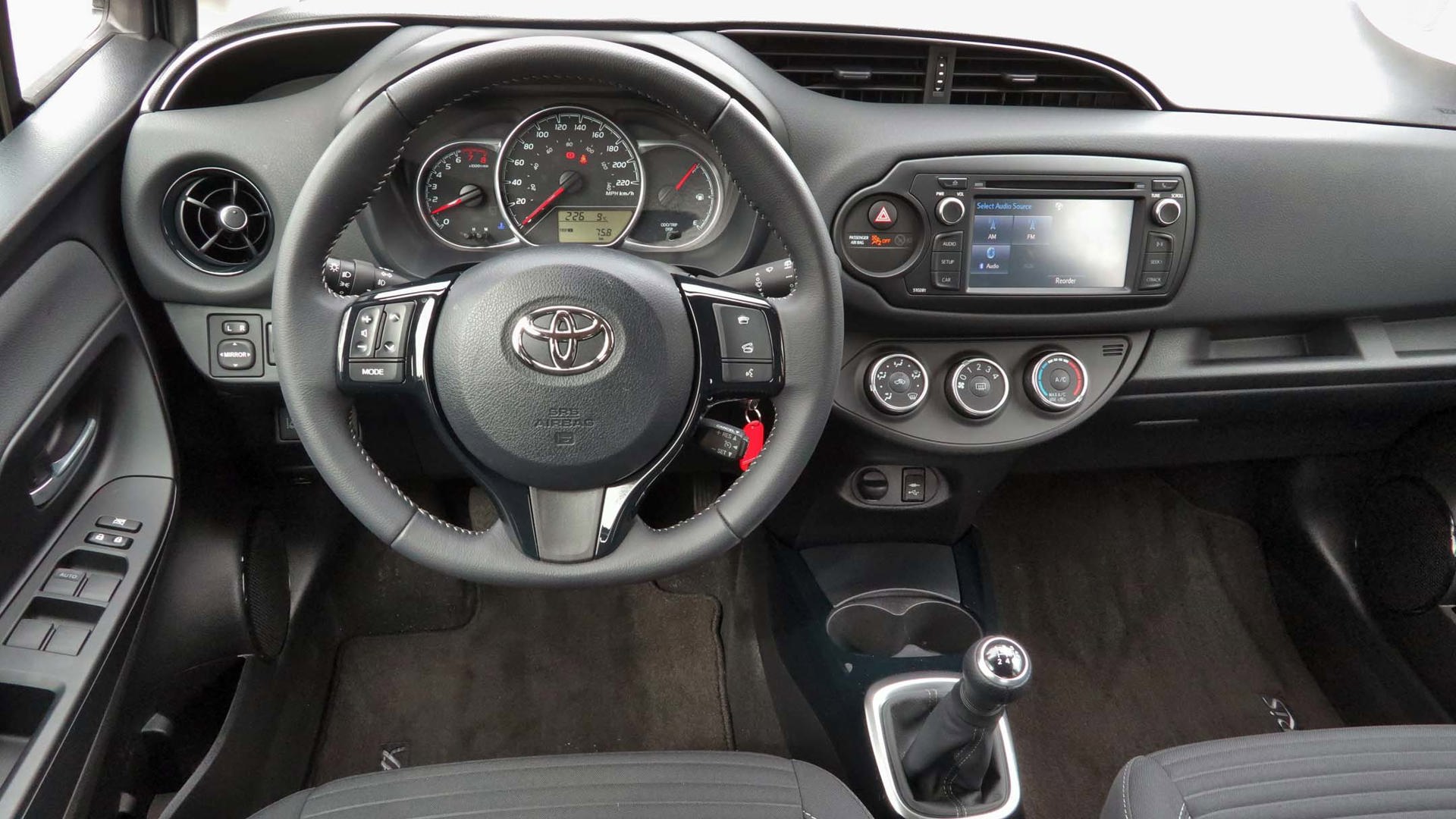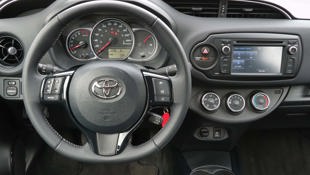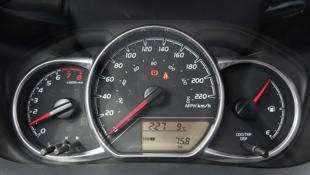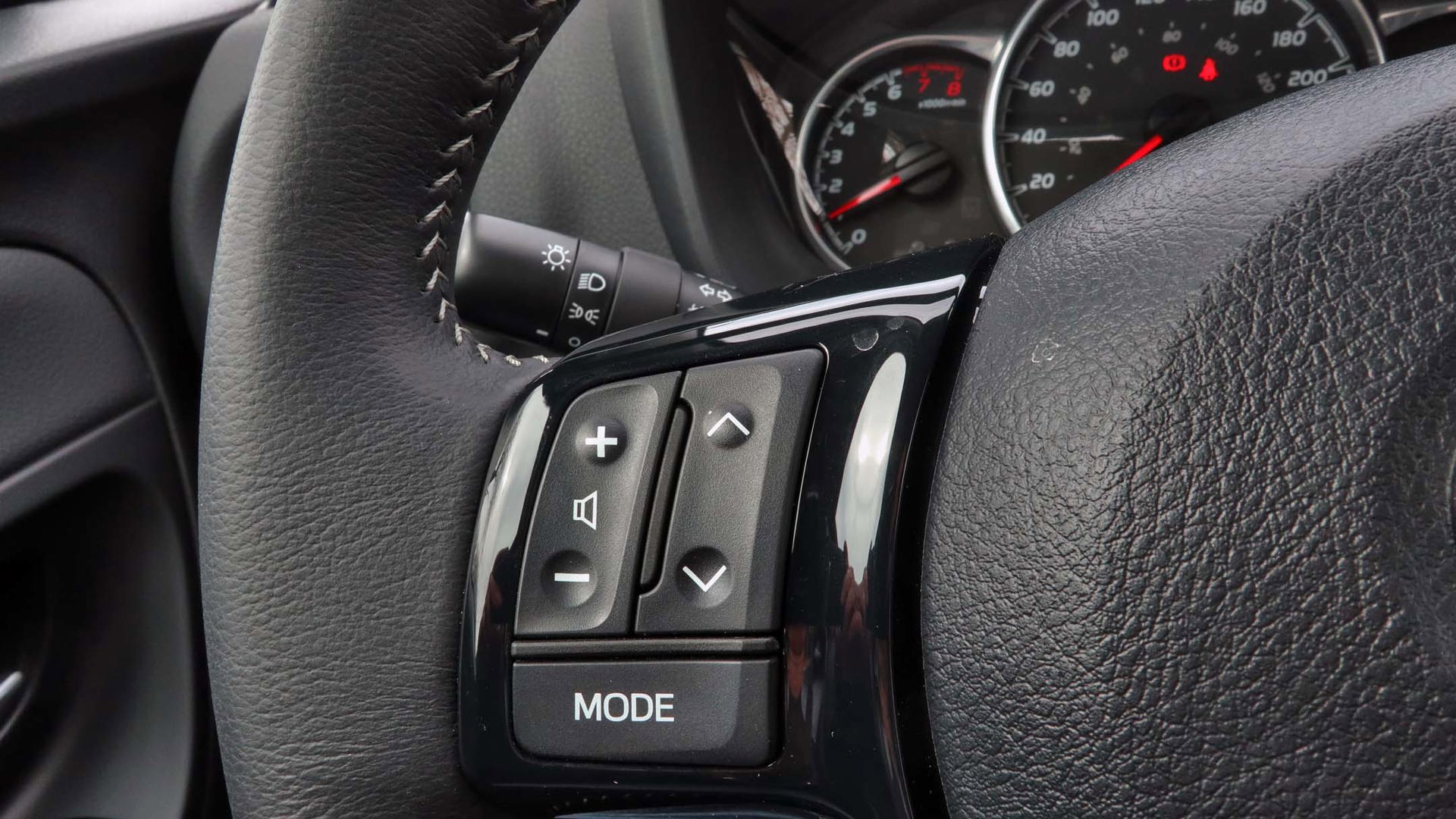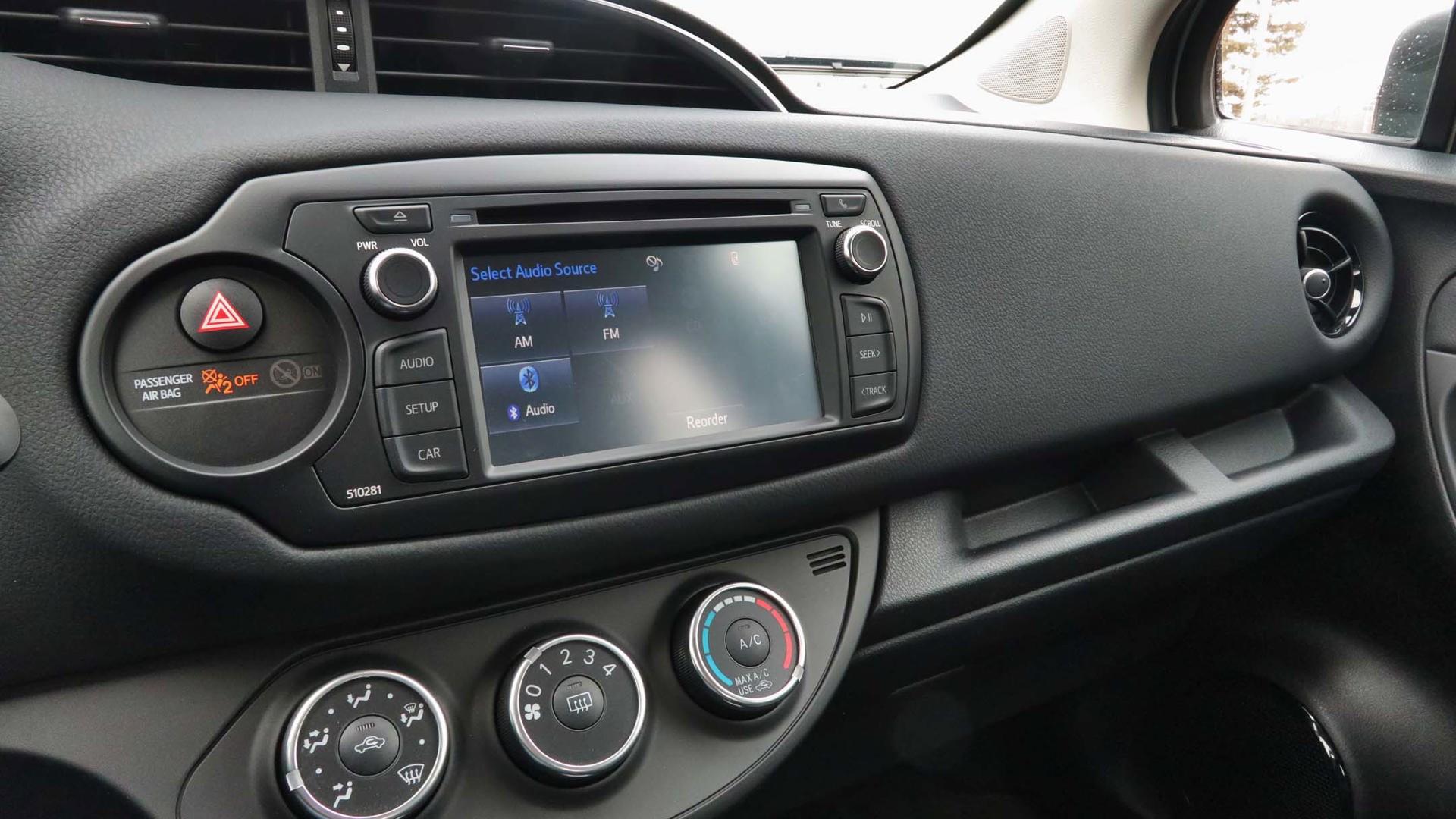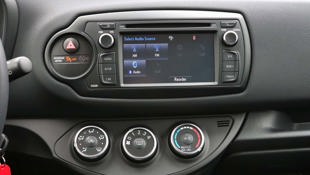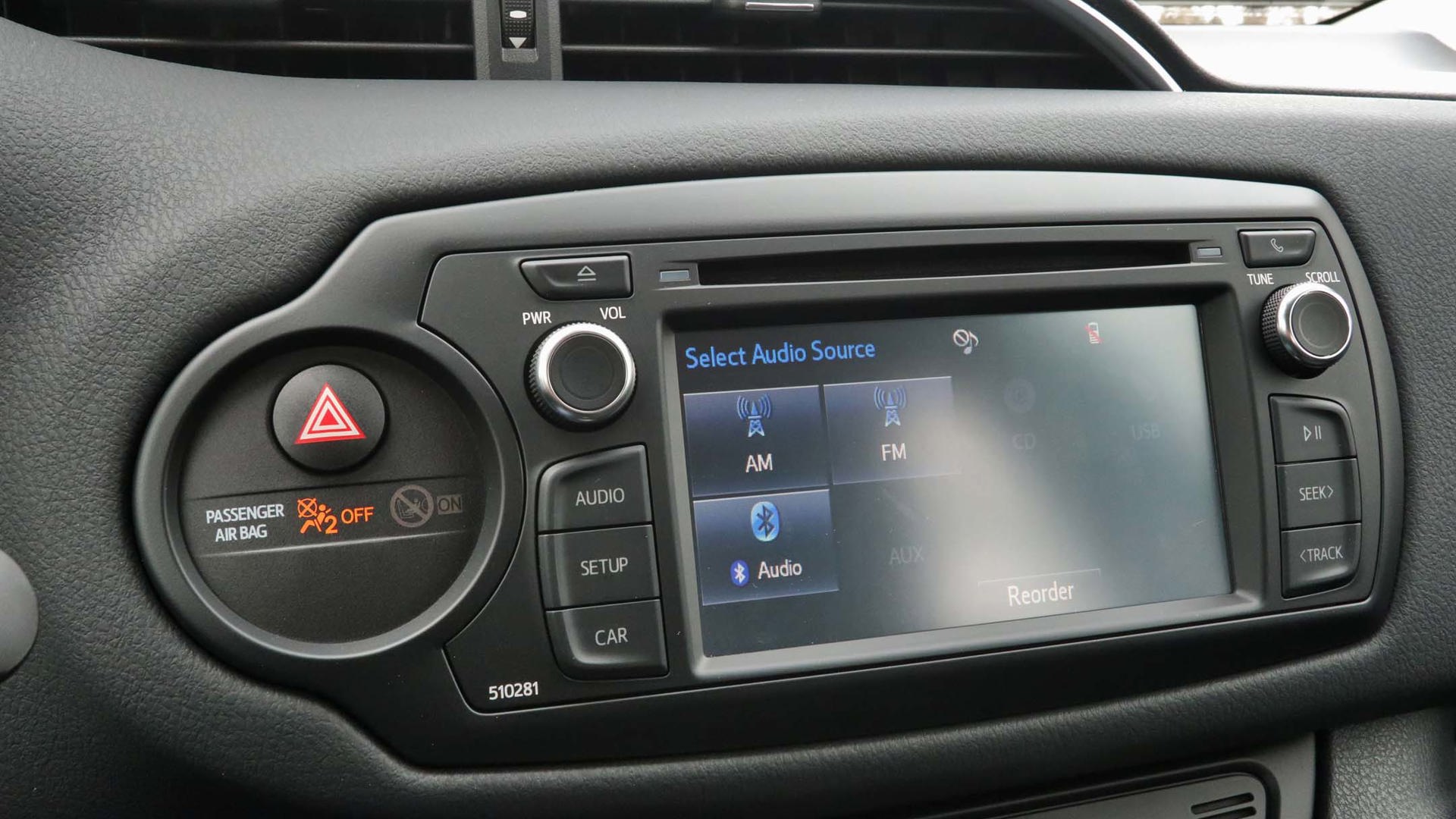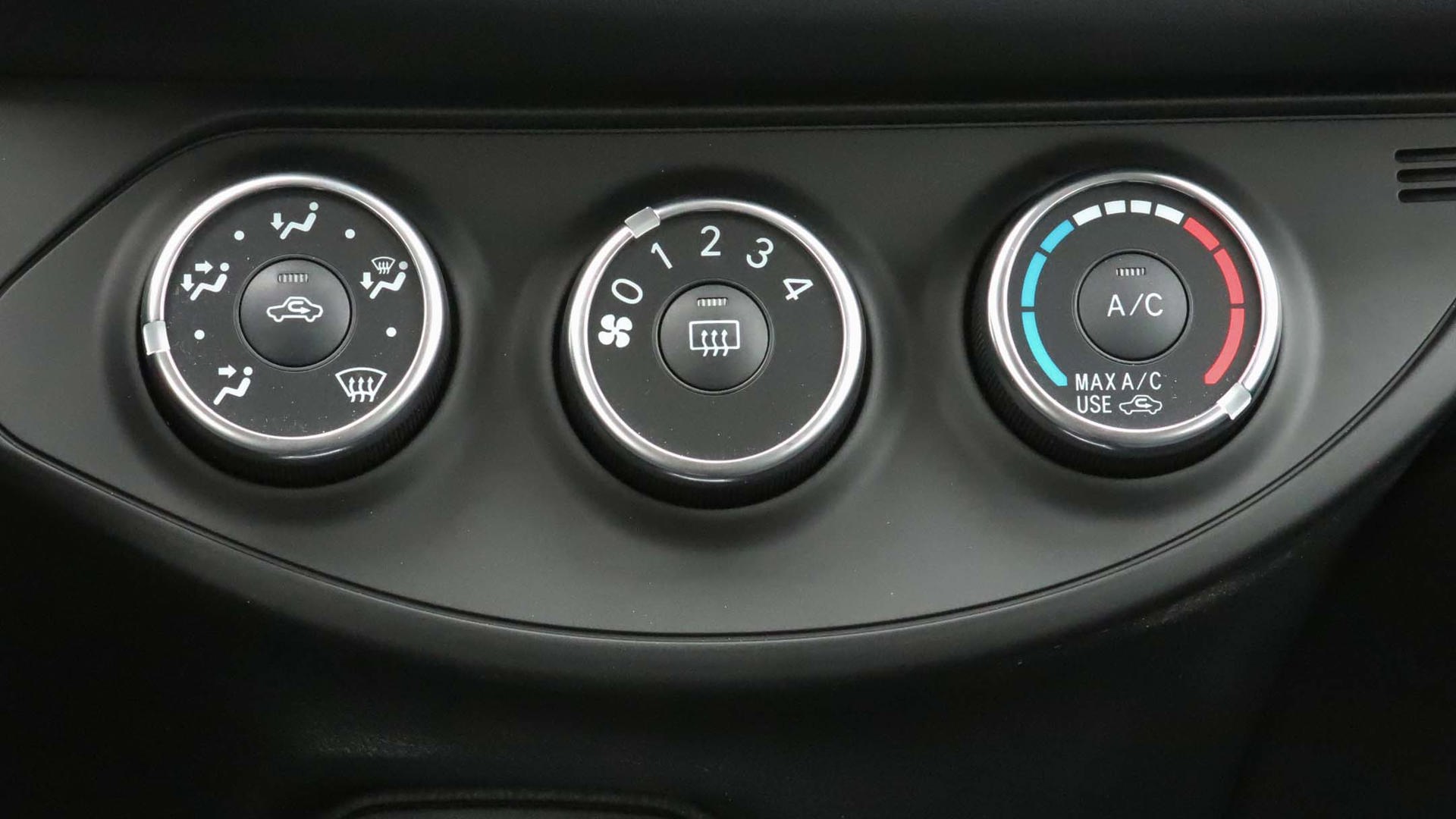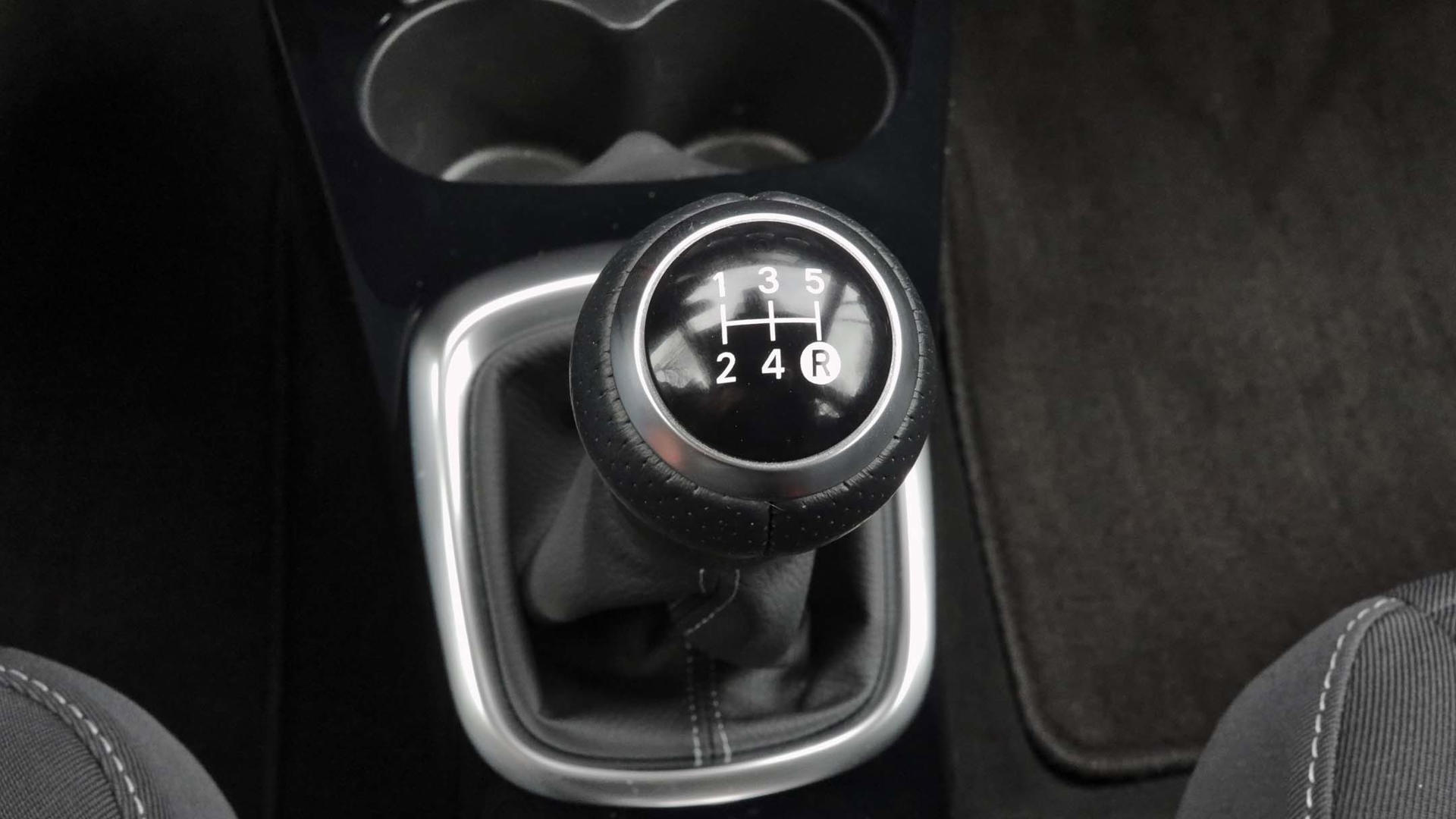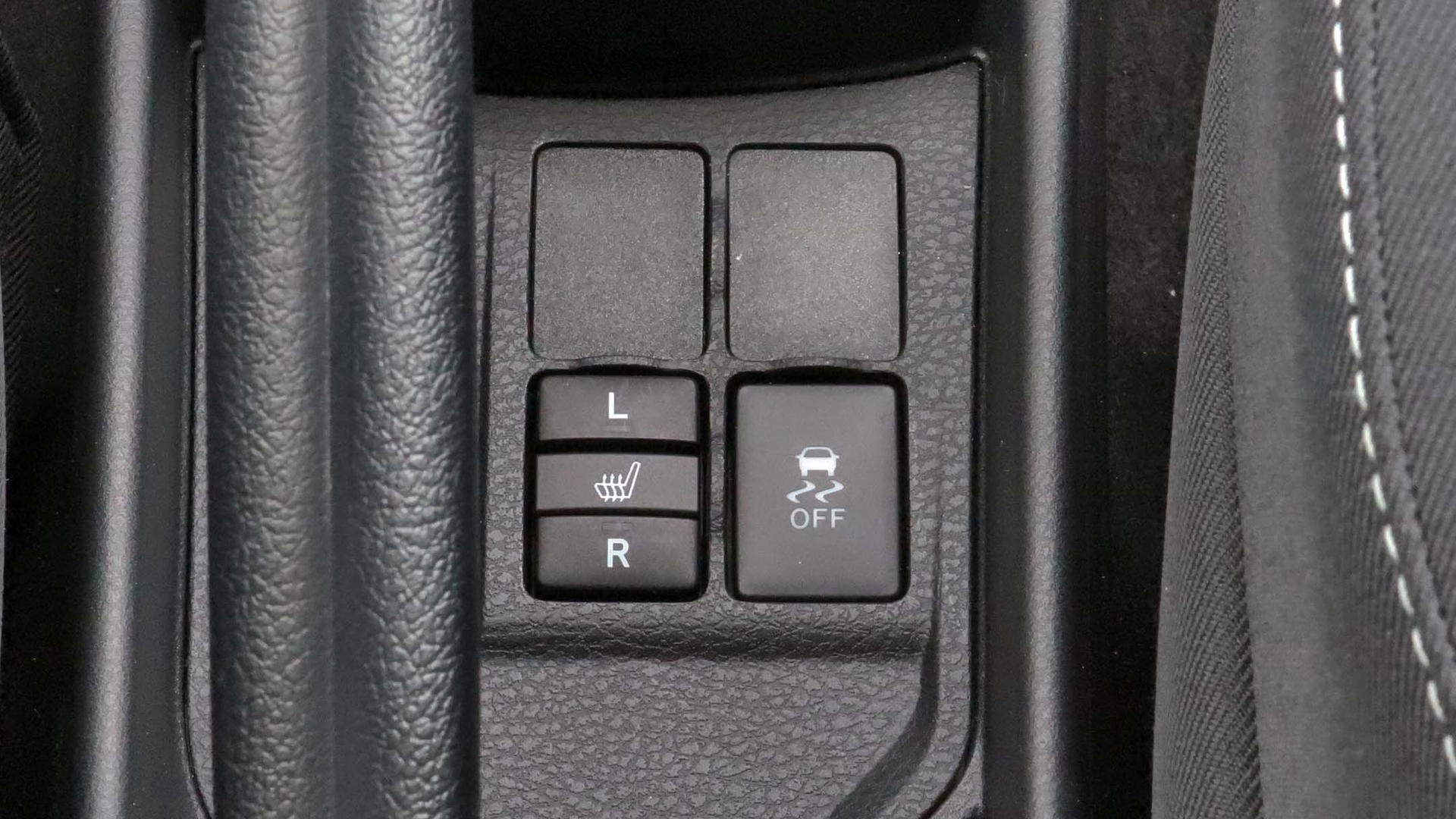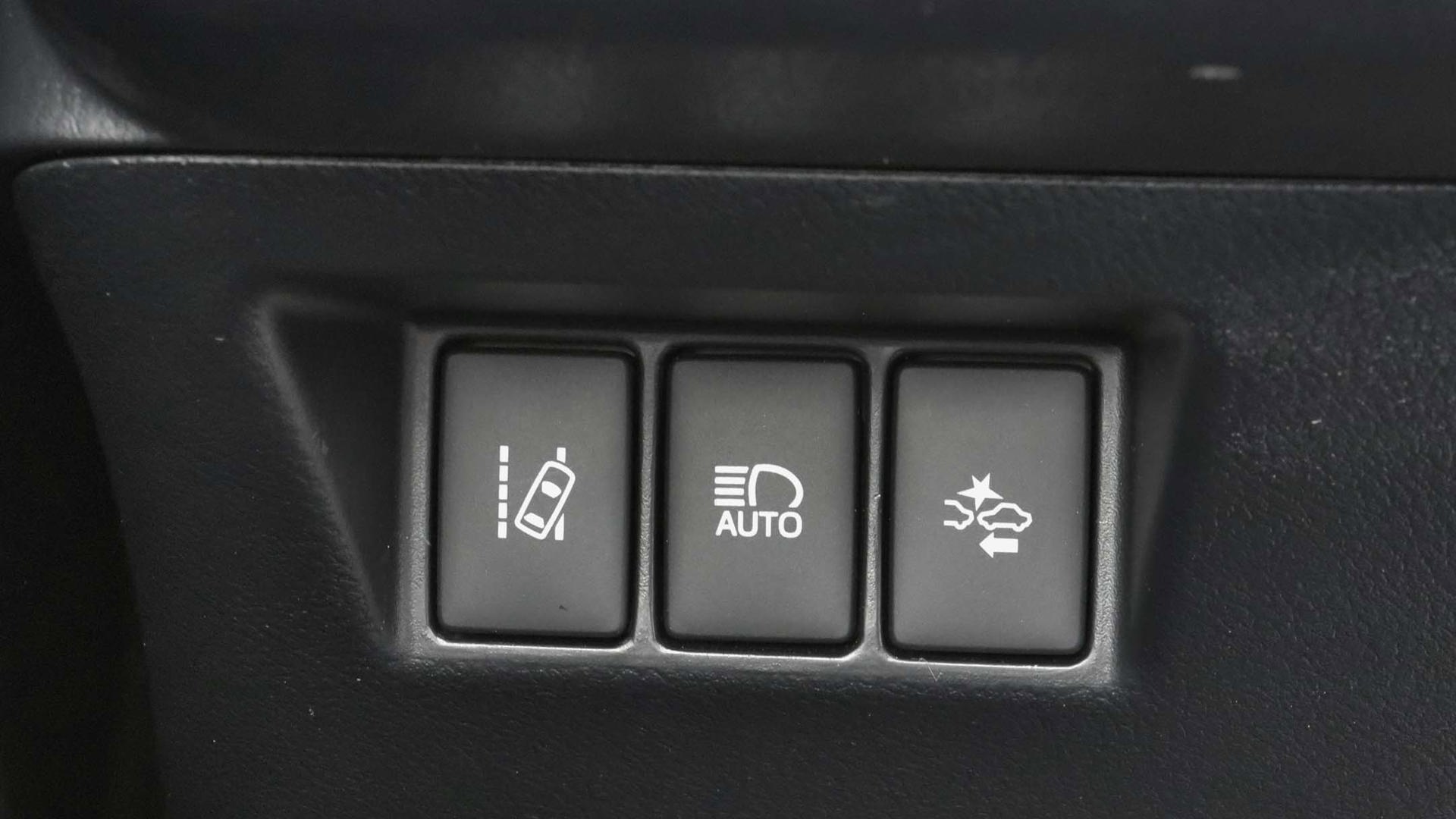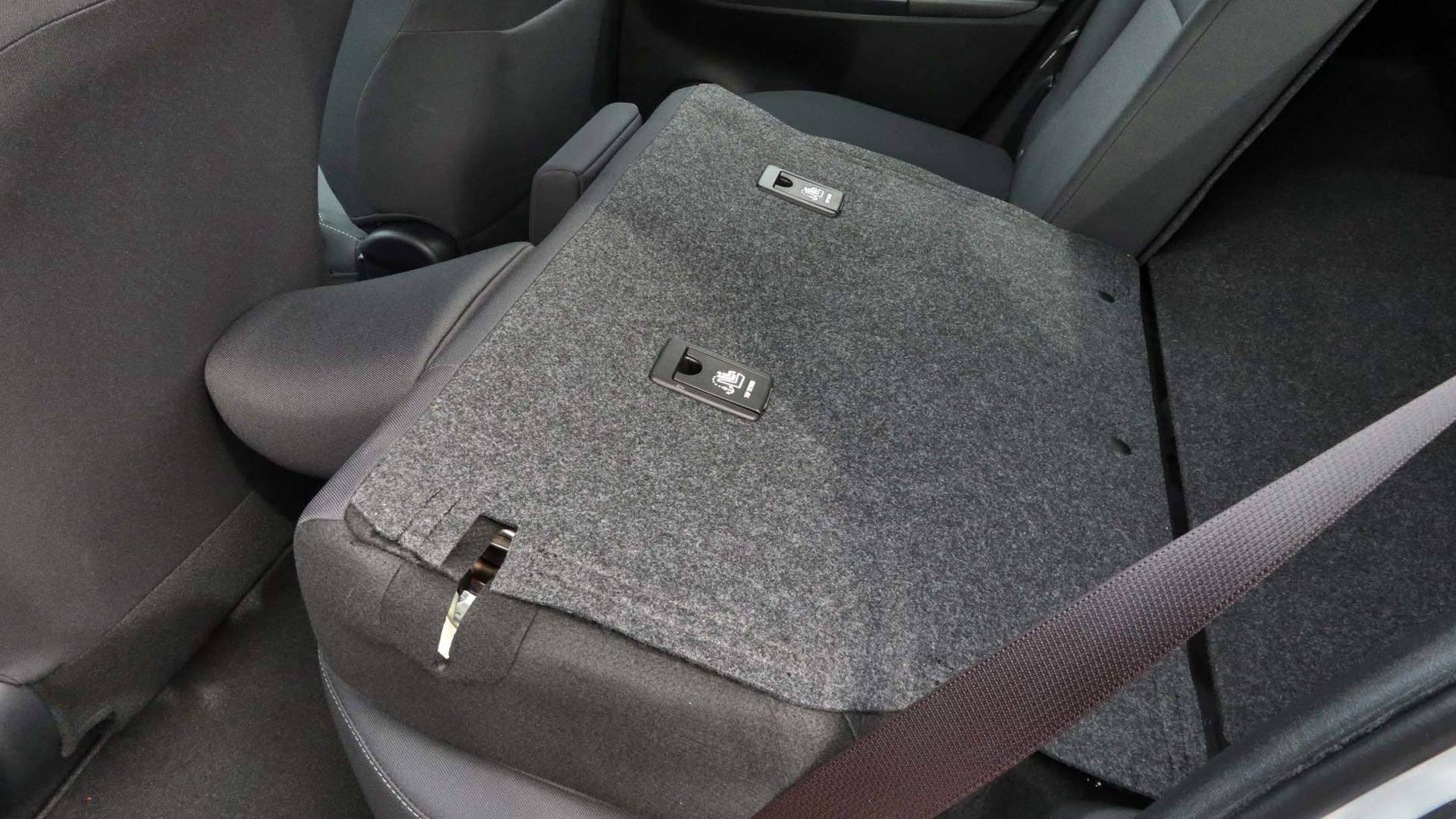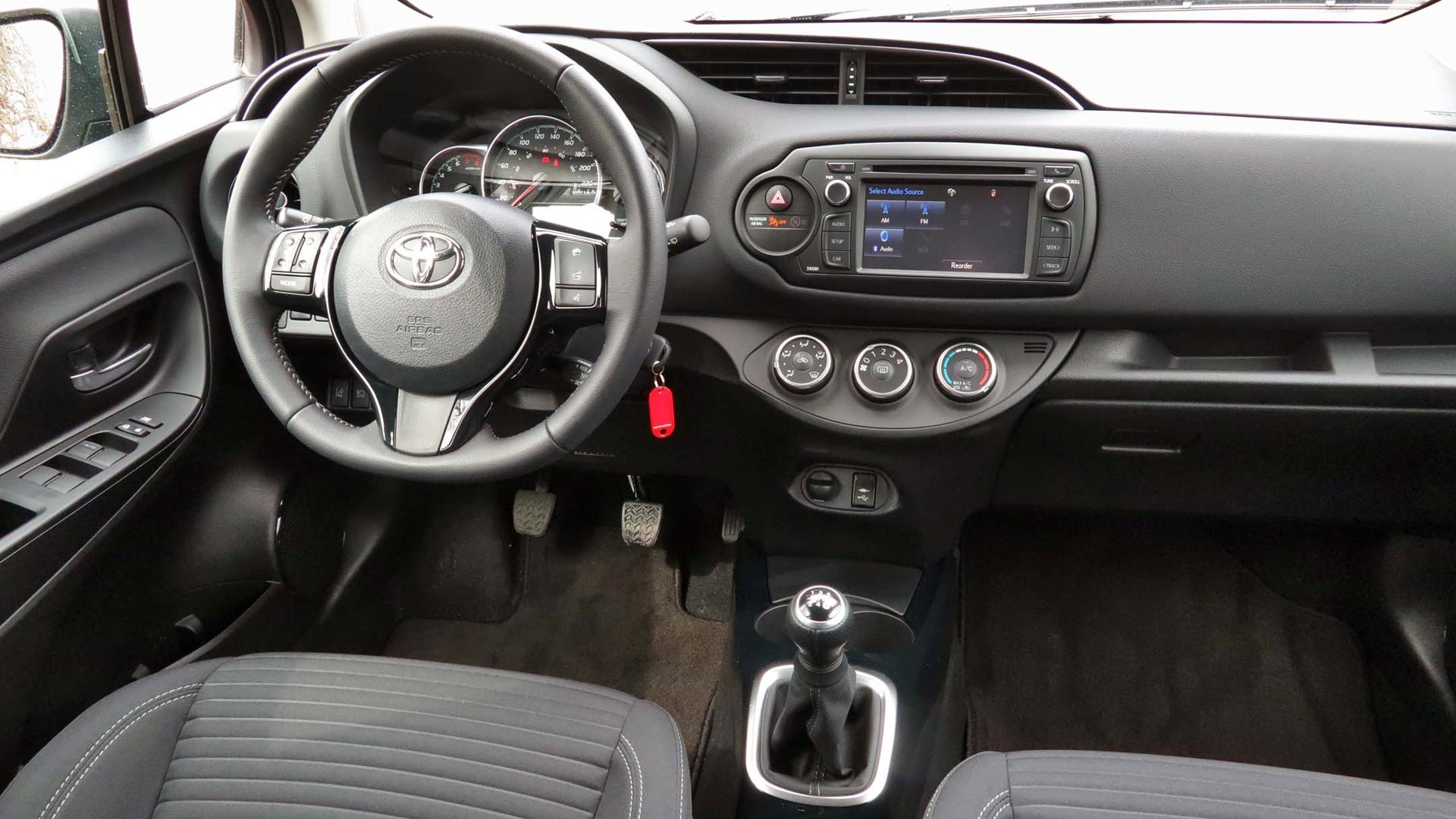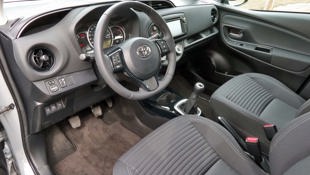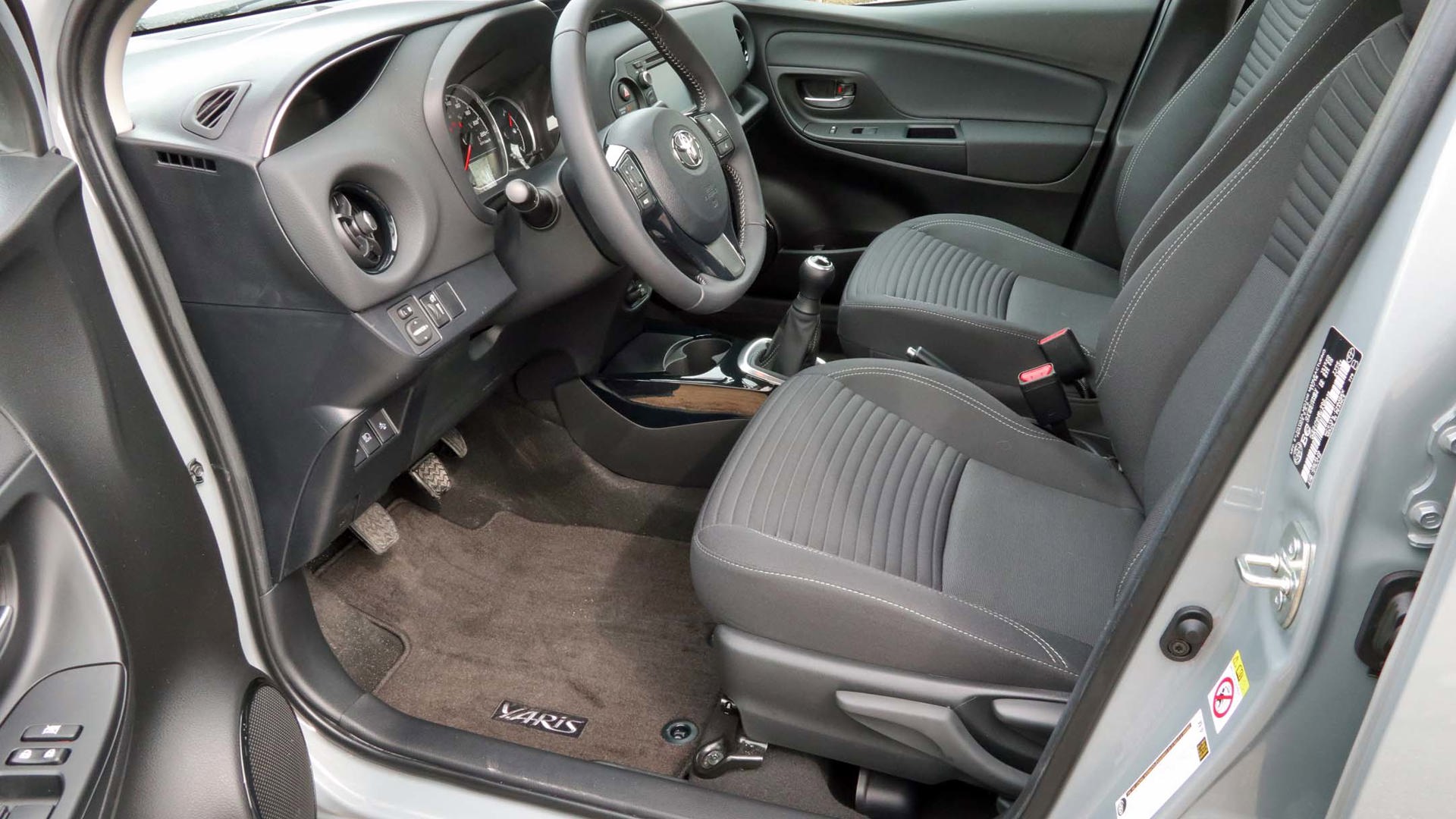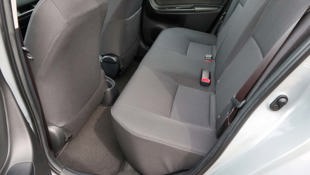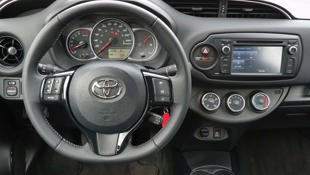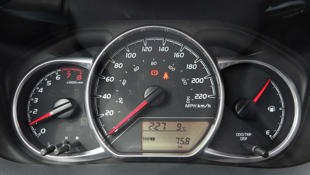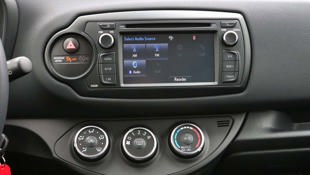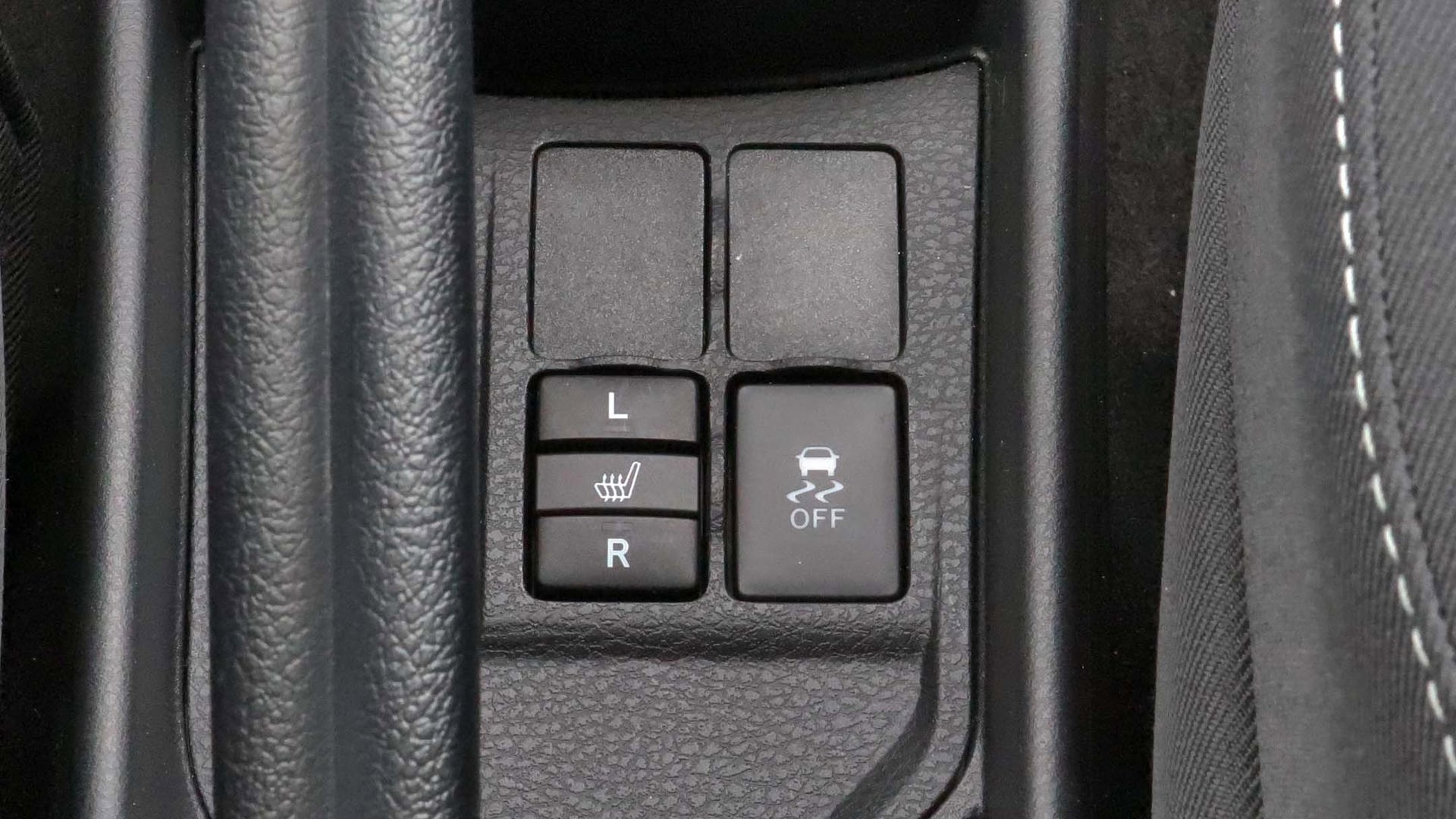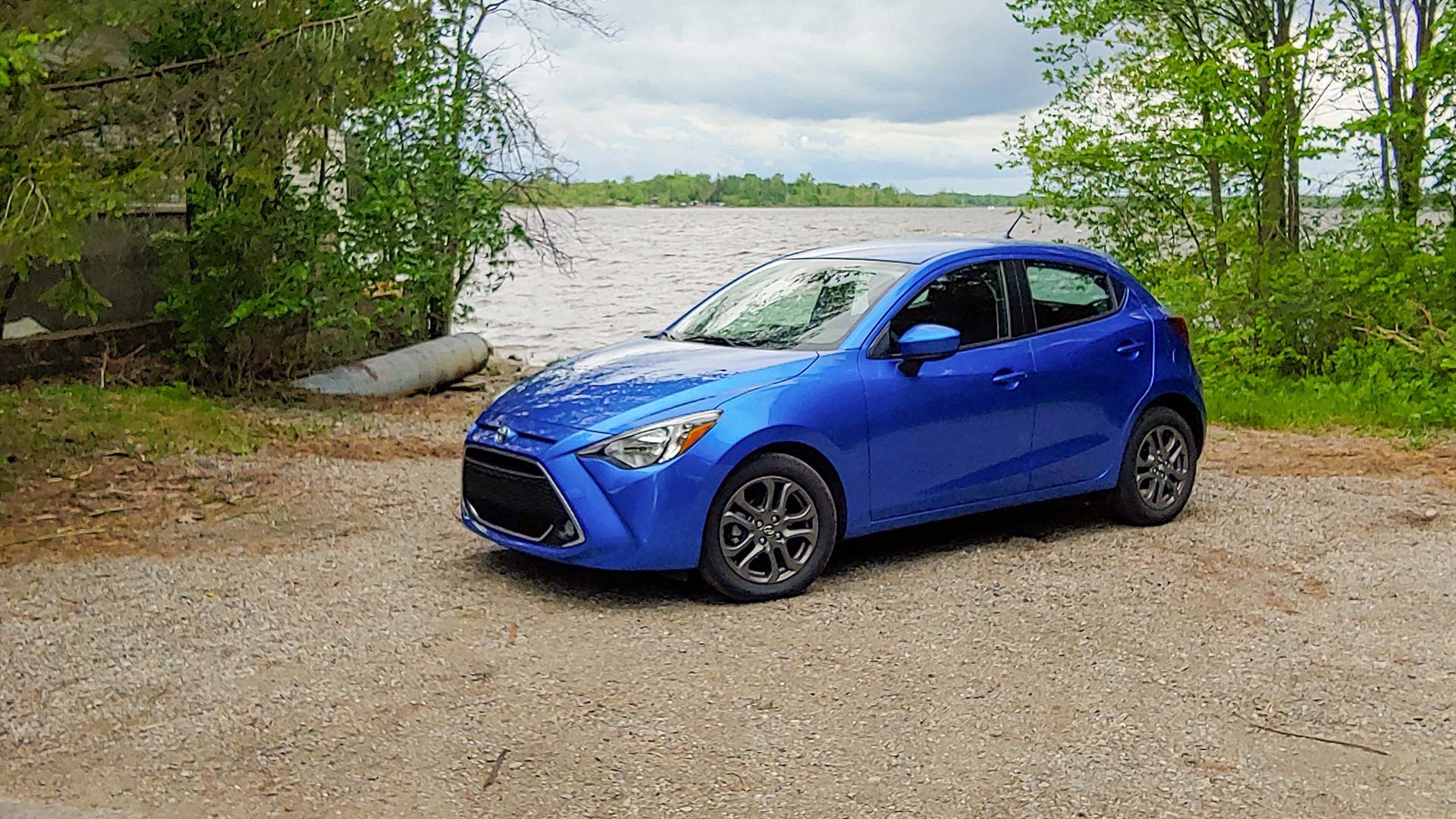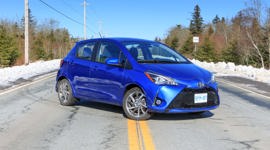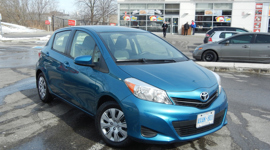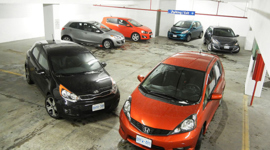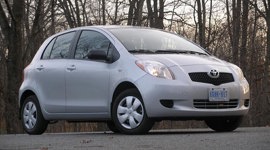 AutoTrader SCORE
AutoTrader SCORE
-
STYLING6/10
-
Safety7/10
-
PRACTICALITY7/10
-
USER-FRIENDLINESS8/10
-
FEATURES7/10
-
POWER6/10
-
COMFORT8/10
-
DRIVING FEEL6/10
-
FUEL ECONOMY8/10
-
VALUE8/10
When is a Toyota not a Toyota? In the case of the Yaris, when it’s a Mazda. The sedan version of this tiniest Toyota became a rebadged version of the Mazda2 for 2016, and next year, the hatchback will do the same. Depending on your preference, you’ll either have to wait for that one to arrive, or to grab your last chance at the Toyota-built 2019 one as I’m testing here.
What you get in the 2019 Toyota Yaris Hatchback, for now, is a solid but unexciting little runabout that has a few higher-tech features overlaid but with an interior that looks pretty dated – despite a facelift that it received for 2018.
It’s pricier than the competition, including hatchbacks like the Hyundai Accent, Kia Rio, Nissan Micra and Versa Note, and Chevrolet Spark – at least when you compare starting points. You can get the Yaris Hatchback in a three-door version, which comes in a single base trim level for $15,690 with a stick shift, and $16,685 with an automatic. The five-door Yaris comes in two trim levels: the LE starting at $17,015, and my SE tester at $18,665. I had the five-speed manual transmission, and you add $1,000 to the LE or SE for the four-speed automatic.
All trims use a 1.5L four-cylinder that makes 106 horsepower, plus 103 lb-ft of torque. That’s not a lot of power, but it’s also not pulling around a particularly heavy car. Usually, I came in under the Yaris’ published combined fuel rating of 7.2 L/100 km, averaging 6.6 L/100 km in city and highway driving.
Although the automatic is more expensive and only has four speeds, I’d probably take it over the manual. The stick-shifter throws are long and rubbery, so there’s no great pleasure in the many gear changes you have to make to keep the little engine in its sweet spot. And without a sixth gear, it drones along the highway at just below 3,000 rpm at 100 km/h.
There’s not going to be a stick available in the upcoming new Yaris hatchback in the US at launch, just a six-speed automatic, but Toyota Canada recently confirmed a manual is coming to Canada for 2020.
A “hot hatch” this is not. It obediently goes where you point it, but it rolls around the corners rather than snipping sharply in and out of them, and it has a wider turning circle than I’d expect for something this small. I understand the market at which it’s aimed, but there’s no law that says a grocery-getter can’t be entertaining – as the much-sharper-handling, fun-to-drive Nissan Micra proves so well.
Think of it as a car that gets you where you’re going, and you’ll be fine with it. On the upside, visibility is good (aided by a single huge front windshield wiper when it’s raining), and the brake pedal has a confident heft to it.
I’ve never gotten used to that largemouth-bass face the Yaris wears, but the styling changes from last year improved the back end – most notably, incorporating the back-up lights into the taillights. The white back-up lamp used to be a single unit mounted at the bottom of the bumper, at pretty much the same height as most parking curbs. In addition to that light being repositioned, extra protection comes from a rear-view camera that’s now standard equipment on all Yaris trim levels, thanks to it recently being made mandatory on every new vehicle.
You really feel the car’s entry-level position when you open and shut the doors, which produces a hollow and tinny sound. You also have to make sure to really slam the hatch, because it’ll look closed but won’t be latched – which I discovered when the interior lights didn’t go out.
There’s actually a fair bit of legroom for front-seat passengers. Those in the rear get less, of course, but with space to slip their feet under the front chairs, it’s adequate for all but the very tallest, at least if they’re not going too far. The rear seatbacks fold fairly flat, and the lift-over is low enough that it’s easy to put stuff in the cargo compartment.
Perhaps I’ve just got a creaky memory, but it seems that the cupholders hold drinks better than in a model I drove before the Yaris got its refresh. Just about everything else seems to carry on, including the delightfully simple climate controls, which are huge dials that are so easy to find and grab with very little distraction. The very simple stereo also has enough hard buttons to minimize time spent away from looking at the road. Heck, there are even two little buttons to set the hours and minutes on the clock – handy because daylight savings changed over when I had the car, and I didn’t have to grab the owner’s manual to figure out how to do it.
About the only one that can be tough is the button for the seat heaters – hot front seats being standard on every trim level, even the three-door CE. It’s located down by the shifter, and was tough to spot because the corner of my coat was always in the way (and if you need your seat warmed, chances are you’re wearing one). Once you turn them on, though, those chairs get hot. I tend to be uncomfortable anywhere below 20°C (colder-weather fans would melt into a puddle in the room where I’m writing this) and even I had to turn mine off after just five minutes of butt-warming.
Both five-door trims have air conditioning, which is isn’t available on the three-door model. The base five-door LE also includes such items as keyless entry, power mirrors, centre touchscreen, tonneau cover, and cruise control; the SE builds on that with rear disc brakes instead of drums, “sport-style” seats, leather-wrapped steering wheel, LED daytime running lights, fog lamps, and 16-inch wheels rather than the LE’s 15-inch rims.
Every model includes Bluetooth, USB port, and auxiliary input, but not Apple CarPlay or Android Auto – you’ll have to wait for the Mazda-based version for that.
All models also include a version of Toyota Safety Sense, which adds a package of forward collision warning, lane-departure alert, and automatic high-beam headlights. It doesn’t have the adaptive cruise control that’s bundled in on most other Toyota models, though, and blind-spot monitoring isn’t available.
So what’s the verdict? On the minus side, the Yaris is pricier than the competition, and it looks and feels dated. On the plus side, it consistently rates high for reliability and value, it’s relatively roomy, and it’s simple to operate. In addition to comparing it against other 2019 models, you’ll also have to decide if you prefer your Yaris to be a Toyota or a Mazda – and if you’re going to buy it now, or buy it later.
| Engine Displacement | 1.5L |
|---|---|
| Engine Cylinders | I4 |
| Peak Horsepower | 106 hp @ 6,000 rpm |
| Peak Torque | 103 lb-ft @ 4,200 rpm |
| Fuel Economy | 7.8/6.5/7.2 L/100 km city/hwy/comb |
| Cargo Space | 433 L |
| Model Tested | 2019 Toyota Yaris Hatchback SE 5M |
| Base Price | $18,665 |
| A/C Tax | $100 |
| Destination Fee | $1,620 |
| Price as Tested | $20,925 |
|
Optional Equipment
$540 – Cement Grey w/Black Roof colour scheme $540
|
|
